
What is a Sailboat Centerboard?

Last Updated by
Daniel Wade
June 15, 2022
A sailboat centerboard is a retractable fin that protrudes from the bottom of the hull. The centerboard keeps the boat stable and on course.
Centerboards are an important and often overlooked part of a sailboat, but they're essential to stability and effective navigation. Centerboards perform the function of a keel and keep the boat on course regardless of wind direction. Centerboards are primarily found on small trailerable vessels, which vary in length from 12 to 25 feet.
Table of contents

How a Centerboard Works
Centerboards look similar to fin keels, but they have one notable difference: they're retractable. Small sailboats use centerboards for stability and to keep a straight course, especially when sailing windward .
Technically speaking, a centerboard is a rudimentary form of a hydrofoil. In practicality, it's like a rudder that always stays amidships. This is beneficial, as it forces the boat to track a straight course regardless of what direction the wind is blowing.
Without the centerboard, the wind would push the sailboat in whatever direction it was blowing. Tacking would be nearly impossible, and attempting to sail windward could simply knock down the boat. In this sense, the centerboard performs the same function as a fixed-keel.
Centerboard Sailboat Characteristics
Centerboard sailboats are typically less than 25 feet in length and designed for shallow water. In fact, centerboard boats are perfect for shallow water. Cruising in lakes and rivers is a joy with a centerboard boat, as the board can be retracted for towing, beaching, or skimming over shallow water. Centerboard sailboats are the ultimate shoal-draft vessels.
Centerboards descend from a hollow cavity in the center of the boat. This cavity is called the centerboard trunk. Some centerboards are removable and slide vertically into the centerboard trunk. Others are hinged or enclosed, allowing them to be raised and lowered from inside the cabin without removal.
Removable Centerboards
Removable centerboards are usually found on the smallest sailboats. These blades tend to be roughly twice the length of how they look from under the boat. This is because the centerboard trunk has to be above the waterline. Remember, the centerboard trunk is effectively a hole in the boat, so it can't be the same height as the water.
Enclosed Centerboards
Enclosed centerboards are common on mid-sized and larger 'small' boats. They're especially common on vessels equipped with cabins. The primary benefit of an enclosed centerboard is water tightness, as the board is housed within a sealed centerboard trunk.
Enclosed centerboards can be raised and lowered from inside the cabin and never needs to be removed from the boat. They're also shorter (overall) than removable centerboards, as they don't mount to the very top of the high centerboard trunk.
The primary drawback of enclosed centerboards is increased complexity and access issues. But in most cases, small centerboard craft are not usually in the water long enough for severe growth issues. Additionally, retracting the board can protect it from excessive marine gunk.
Hinged Centerboards
Hinged centerboards (or 'swing keel' centerboards) are the most common enclosed variety. Hinged centerboards pivot on a forward hinge. They're long and thin and sometimes stow in a hidden centerboard trunk that's mounted to the bottom of the hull.
These 'stealth' centerboard trunks free up cabin space at the expense of a few inches of draft. Hinged centerboards offer an increased level of grounding safety, as they retract on their own if they hit the ground (instead of shearing off). It's the collapsing steering column of sailboat keels .
Advantages of Centerboard Sailboats
The primary advantage of a centerboard boat is its inherent shoal-draft capability. That means centerboard boats can go a lot closer to shore than fixed-keel vessels. They can even go on shore, and drying out during low tide is rarely hazardous. They sit upright on dry land, and they're easy to trailer around.
The cost to construct, own, and maintain a centerboard cruiser is often far less than a traditional fixed- keel sailboat . This is primarily because you usually don't need a crane to pull it out of the water. Centerboard boats are often small and light enough to leave on a trailer, and their small size avoids excessive marina fees.
Disadvantages of Centerboard Sailboats
Can you cross an ocean in a centerboard sailboat? Most would caution against it. Some would say, "absolutely not," but it has happened a time or two. The issues with centerboard sailboats are size, displacement, draft, and stability, which cause problems in rough weather.
Most centerboard sailboats are only comfortable in calm coastal and inland waters. Conditions aboard a shoal-draft sailboat in foul weather range from uncomfortable to downright perilous, which is a major tradeoff. Additionally, small centerboard sailboats typically lack the cabin and storage space necessary for seagoing provisions.
Also, most small centerboard sailboats simply aren't designed for extended cruising. Things like generators, VHF radios, large freshwater tanks, and bathroom facilities usually aren't up to the task on small boats.
Centerboard Sailboat Propulsion
The smallest centerboard sailboats, such as Sunfish and Laser racers, have no propulsion system other than the sail itself. However, anything beyond 15 feet in length will probably have some alternative propulsion. Small boats have an oar or two on board, but most utilize a 5 to 10-horsepower outboard motor.
Inboard motors are rare, but a one or two-cylinder marine diesel can sometimes be found below the cockpit of a centerboard cruiser. Some small 'motor-sailer' boats have inboard engines and a centerboard for sailing.
Best Centerboard Sailboats for Cruising
Centerboard sailboats are ideal for coastal and inland cruising, and many of these pocket-sized vessels include surprisingly comfortable accommodations. These aren't dinghies or converted rowboats; they're serious sailing vessels in a compact package. Here are a few of the best 'all-around' centerboard sailboats available today.
Catalina 22
The Catalina 22 is one of the most popular sailboats ever built. It has the profile of its larger cousins (like the Catalina 27) but features a compact swing keel centerboard instead of a fin keel . At 22 feet long, the Catalina 22 is about as hardy as centerboard cruisers get.
And thanks to its retractable hinged centerboard, there's enough cabin space for a V-berth, porta-potty, stove, sink, settee, and a convertible dining area berth. The trailerable Catalina 22 is widely available on the used market, often for entry-level pricing.
West Wight Potter 19
The West Wight Potter 19 is a small centerboard pocket cruiser with a cult following. It's a fiberglass V-bottom trailer sailboat with a spacious cabin, retractable centerboard, and foldable mast. This little cruiser is capable and convenient, and it's still produced today.
West Wight Potter sailboats are famous for being (quite literally) unsinkable. They're loaded with flotation foam and stay afloat even when completely flooded. Plus, they're easy to sail, and they have an enormous amount of natural stability.
The Hunter 22 is a remarkably well-balanced centerboard cruising boat. Like the Catalina 22, this Hunter sailboat features a compact swing-type retractable centerboard. It has a spacious cabin with room to accommodate the whole family on short voyages.
Hunter designed this compact cruising sloop with a masthead rig, which is simple to operate and robust. These vessels were only produced for a few years in the 80s, but variants are plentiful, and they're plenty of fun to sail.
Centerboard Vs. Fixed Keel
Are you interested in buying a sailboat ? Deciding between a centerboard and a fixed keel is an important decision that shouldn't be overlooked. If you're looking for a trailerable weekender for short voyages and an occasional offshore run, then consider a centerboard. They're cheap and easy to store in or out of the water.
Centerboard sailboats are also ideal for island hopping, as long as the islands aren't too far from your homeport. Florida to the Bahamas is a common and manageable journey for cruising centerboard boats.
And since centerboard sailboats tend to be smaller, it's important to consider how much provision storage you'll need for the journey. Running out of food or fresh water isn't much fun in the middle of the ocean.
Fixed keelboats are ideal for extended offshore voyages and coastal cruising, especially in choppy waters. A fixed keel cruising boat offers superior roll comfort, stability, and handling in a wide range of weather conditions. They're safer in storms as well. For serious sailing, it's difficult to find an ideal alternative.
Related Articles
I've personally had thousands of questions about sailing and sailboats over the years. As I learn and experience sailing, and the community, I share the answers that work and make sense to me, here on Life of Sailing.
by this author
Sailboat Parts
Learn About Sailboats
Most Recent

What Does "Sailing By The Lee" Mean?
October 3, 2023

The Best Sailing Schools And Programs: Reviews & Ratings
September 26, 2023
Important Legal Info
Lifeofsailing.com is a participant in the Amazon Services LLC Associates Program, an affiliate advertising program designed to provide a means for sites to earn advertising fees by advertising and linking to Amazon. This site also participates in other affiliate programs and is compensated for referring traffic and business to these companies.
Similar Posts

Affordable Sailboats You Can Build at Home
September 13, 2023

Best Small Sailboat Ornaments
September 12, 2023

Discover the Magic of Hydrofoil Sailboats
December 11, 2023
Popular Posts

Best Liveaboard Catamaran Sailboats
December 28, 2023

Can a Novice Sail Around the World?
Elizabeth O'Malley

4 Best Electric Outboard Motors

How Long Did It Take The Vikings To Sail To England?

10 Best Sailboat Brands (And Why)
December 20, 2023

7 Best Places To Liveaboard A Sailboat
Get the best sailing content.
Top Rated Posts
Lifeofsailing.com is a participant in the Amazon Services LLC Associates Program, an affiliate advertising program designed to provide a means for sites to earn advertising fees by advertising and linking to Amazon. This site also participates in other affiliate programs and is compensated for referring traffic and business to these companies. (866) 342-SAIL
© 2024 Life of Sailing Email: [email protected] Address: 11816 Inwood Rd #3024 Dallas, TX 75244 Disclaimer Privacy Policy

What’s the deal with Centerboards?
Most of you who have followed our journey for some time are familiar with our somewhat infamous centerboard issue, where we ran aground in the Illinois river in 8′ of water when our boat should only draw 4′ . This was the most dramatic and expensive example of the issues we’ve had with the centerboard thus far, but that’s not to say it’s been the only trouble our centerboard has caused us.
In this week’s video, This Little Thing could SINK our Boat , we’re highlighting another pain point and some of the additional maintenance that comes along with having a pivoting centerboard. We’d like to take this opportunity to talk a little bit about the pros and cons of the centerboard system and shed some light on how we’ve been using it with real life examples.
Sailors love to talk shop. It seems everyone has an opinion when it comes to boats, and if you’re not too careful, it can lead lead to hours upon hours of enjoyable and sometimes educational discussion. Invariably anytime we get beyond the general pleasantries of “She’s a beaut!” or “What’s the length?” we know with more and more certainty that we’re talking with a sailor. As the questions get more specific e.g. “How much fuel do you carry?” or “How tall is the mast?” we will eventually hit this question: “What’s the draft?”
Up until this point, it’s only a Q&A session, but as soon as we divulge the boat has a centerboard — and that with the board up we draw between 4-4.5′ but when it’s down closer to 8′ — the discussion will turn one of three ways:
- The questioner wasn’t quite prepared for that answer and is dumbstruck because they didn’t know as much about boats as they thought they did, and were unaware of the centerboard concept or are unaware a boat of our size could have a centerboard.
- The questioner’s face lights up with a twinkle in their eye and responds with something like: “A perfect Bahamas boat, nice!”
- The questioner’s face scrunches up with terror in their eyes: “Why on god’s green earth would you want to maintain a system like that!”
And after three years of owning, maintaining and traveling aboard a boat with a centerboard, we’ve been in each of these 3 camps at one point or another. Let’s dive in and tackle each point of view.

What is a centerboard on a sailboat?
A centerboard is a retractable appendage that pivots in and out of a slot (centerboard trunk) in the hull/keel of a sailboat. Having the ability to raise and lower the centerboard allows the the boat to operate in shallow waters when lifted, while maintaining good upwind sailing characteristics with the centerboard down. Similarly, lifting the centerboard reduces the wetted surface area, resulting in lower drag while sailing downwind. This combination of characteristics makes it possible to build a safe, seaworthy boat, capable of easily sailing upwind off a lee shore, while still allowing the boat to tuck way up into shallow anchorages when necessary.

When first looking for our sailboat , weren’t specifically looking for a boat with a centerboard. It wasn’t on any “avoid ” list of ours either; it just wasn’t on our radar. So when we first saw the boat online and noticed it had a centerboard, we were pretty ambivalent about it.
Is that like a Swing Keel?
Many people have incorrectly referred to our boat as having a swing keel, and for good reason as they are quite similar on the surface. Before finding our boat, we were aware of other boats with swing keels (specifically Southerly Yachts popularized by “ Distant Shores “) and some of their unique benefits. While the swing keel is similar on the surface, it’s an entirely different animal from our centerboard. They both feature large underwater wing-shaped appendages that pivot from underneath the boat to provide additional wetted surface area to reduce leeway and increase lift for sailing upwind. The main difference is that in a swing keel boat the pivoting appendage is actually the keel. In cruising boats, swing keels weigh several thousand pounds, while centerboards weigh a couple hundred. Thus, a swing keel also contains a large part of the boat’s ballast, so the position of the keel can have a substantial effect on the stability and motion of the boat. Additionally, when retracted all the way up into the hull, the boat can be left to dry out while sitting upright in the sand — pretty cool.

Distant Shores II, a Southerly 480
The flip side is this: In the fully retracted position, the keel needs somewhere to go — which takes up interior volume of the boat. Additionally, moving an extremely large and heavily ballasted keel up and down requires some serious mechanical gear, and unless the swing keel is lowered to some extent, there is nothing counteracting the force of the sails to prevent leeway and the boat will not sail to windward.
Whereas with our boat, in addition to the centerboard, we have a shoal draft keel (which actually doubles as a housing for the centerboard). Even without the centerboard down the boat will still sail to windward. Dropping the centerboard only serves to increase the pointing ability and windward performance. The centerboard does not contribute meaningfully to the ballast of the boat (as it weighs about 200lbs), so its effects on stability in the up or down position are muted. It is designed primarily as a hydrofoil to prevent leeway when sailing upwind and is significantly lighter than its swing keel cousin. Lastly, by retracting into the keel instead of all the way into the hull it does not have any negative effect on the interior volume of the boat.
What are the benefits of having a centerboard on a sailboat?
Besides increased upwind sailing performance, the major benefit of a boat with a centerboard is a shallow draft. For our needs navigating the inland river system, sailing the notoriously shallow Gulf of Mexico , and cruising Bahamaian waters, these are fantastic qualities to have in a boat.
The inland river system has a controlled depth of no less than 9′ in the channel from Chicago to Mobile, Alabama, but most of the channel is significantly deeper than that. However , s earching for marinas and anchorages for the night where you have to exit the channel means the depths start changing quickly. With our shoal draft keel we were able to sneak into a number of marinas with sub 5′ depth at their entrance or at the dock that would’ve been impossible in many other sailboats of our size. Even in Mobile we ran aground twice while moving through the marina to get to our dock.

In the Bahamas we find ourselves anchoring way up towards shore with the catamarans instead of much further out near the monohulls. Yet when it comes time to sail to windward, we’re able to drop the board and point much higher than we otherwise would’ve been able to with the shoal draft keel alone. This can shave miles off long passages and minimizes the number of tacks required in a tight channel.
Additionally, dropping the centerboard just a little bit can give us much better handling in tight quarters, as it prevents the bow from falling off downwind when trying to dock in strong crosswinds.
This all sounds pretty good, right? Why would you not want a boat with a centerboard?
What are the issues with centerboards?
With all the apparent benefits, you’d think the centerboard would be a no-brainer. And if you’re purely concerned with performance, then absolutely, it is. However, the centerboard represents an added layer of complexity that just isn’t absolutely necessary for the operation of the boat. Along with this added complexity comes additional maintenance to ensure the system continues operating normally, and even then, when everything is operating correctly, the maintenance itself can create some stressful situations. Below are a few of the negatives of having a centerboard we’ve discovered so far:
General Maintenance

Our centerboard is raised and lowered via a control line, or centerboard pennant. The line is always underwater inside the centerboard trunk, and is incredibly difficult to inspect. The line exits the boat below the waterline meaning we have an unprotected thru-hull without a seacock to close, should there be a leak. The through-hull is connected to a hose and the hose connects to a conduit in the mast that rises well above the waterline.

The centerboard line runs through this conduit and then exits the mast through a sheave at the deck level. It then runs through a turning block and clutch/winch to lock it off. Each of these items require some level of maintenance and/or at least inspection on a regular basis. These are all fairly simple parts, and the system is quite well-designed. However you can probably already imagine some of the issues…
Stepping & unstepping the mast is more difficult

Because the line runs through the mast, stepping and unstepping the mast requires a few more steps to ensure everything goes smoothly. When unstepping our mast, we need to temporarily slacken the centerboard pennant to allow the mast to be raised out of the boat. To ensure we can run the line back through the mast we need to run a messenger line in the mast to be able to retrieve it again when re-stepping.
When re-stepping the mast, extra care needs to be taken to ensure the mast doesn’t get hung up on the centerboard pennant or the conduit it runs through. We’ve heard of other boats stepping their mast only to realize later that they pinched their centerboard control line.
Naturally (or accidentally) slackening the centerboard pennant allows the centerboard to drop, increasing our draft to 8′, unless it’s secured in some other way. We did this at the start of our river trip by securing a line athwartship from each of the midship cleats to act as a set of suspenders to keep the centerboard pinned up inside the trunk. Unfortunately this wasn’t tight enough and slipped off the centerboard allowing it to drop into the fully-down position. This set us back a few days as we fabricated a much stronger system to secure the centerboard line using an exit sheave at the mast partners.

The centerboard trunk is difficult to clean & paint
While our boat was hauled out, we repainted the bottom with CopperCoat . However we were unable to paint the centerboard or the trunk with the same. Had we known better, we would’ve pulled the centerboard immediately after hoisting the boat out of the water with the travel lift. But since it was our first time hauling the boat for storage, we didn’t realize that once we were moved to the hydraulic trailer which the yard used to position boats, we would not be able to get enough height to drop the board and remove it.

We did hang in the slings over the weekend prior to splashing, which gave us time to get underneath the boat with the board down to clean the centerboard trunk and repaint the board and trunk with ablative bottom paint. But we couldn’t repaint with CopperCoat because of how long it needs to dry before being splashed.
The centerboard pivot point is difficult to inspect

The centerboard pivots on a large stainless steel hinge. This plate is bolted into the keel of the boat and has a large pin that runs through the centerboard allowing it to pivot around this point. There is also a heavy duty stainless eye on the backside of the centerboard that the pennant line connects to. Both of which are always submerged in water, and while they are stainless, stainless corrodes in environments lacking oxygen. So these parts need to be inspected on a regular basis, and this means removal of the entire board, which is easier said than done.

The centerboard can get stuck in the up or down position
The centerboard is designed to pivot up and down in the trunk with fairly small tolerances on either side. Any more space than what is needed to get the board out, and it will interfere with the flow of water over the hull, increasing water resistance and drag. Any extra space will also allow sea life to make its way up into the trunk. Thankfully it’s very dark up in there, there isn’t much water flow carrying nutrients into that space, and we have been diligent about keeping it clean. While we haven’t run into this particular issue yet, we’ve heard of some boats that have had so much growth in the trunk that they can’t get the board to move.
While, we haven’t had our board stuck in the up position, but we have had the board stuck down. The centerboard is a hydrofoil, so the leading edge is a bit wider than the trailing edge, much like an airplane wing. And whereas dagger board trunks (where the board drops in vertically) can be contoured to follow the shape of the board almost exactly, our centerboard trunk is rectangular, as it needs to accomodate the width of the leading edge moving all the way through it. This means the trailing edge of the board (which is on the top when in the retracted position) leaves a lot of extra space between it and the trunk, creating a wedge shape… Maybe you can see where I’m going with this…
A perfect storm scenario can brew under just the right conditions. Imagine for a moment you are loosening the centerboard pennant line to drop the board down, but for one reason or another, the sideways pressure of the water against the board when sailing upwind, growth in the centerboard trunk, stops or slows the dropping motion of board — perhaps it even gets pushed back up slightly as the boat pitches forward and backward in a large wave. You, as the unsuspecting crewman, continue to slacken the line thinking the board is dropping, but in reality what is happening is the line comes to rest on the top of the board, and because of the wedge-shaped trailing edge, the line slips down ever so slightly between the board and the trunk, and gets trapped . Once there it wedges in between the board and the trunk making it extremely difficult to move.
This has happened to us twice. The first was an easy fix, which occurred during a daysail after purchasing the boat. We could’ve easily addressed it without getting into the water, but it was hot, the water was clear, and despite being warned about this particular scenario, I didn’t have a good visualization of what was happening and wanted to see it for myself.

There is actually a built-in mediator of this problem which saved us considerable effort: A short section of exhaust hose with a diameter that almost exactly matches the width of the centerboard trunk serves as a conduit for the last 18″ of line of the centerboard. This prevents the slacked line from getting wedged in too tightly and allowed us to break it free with a tiny bit of force.
The second time however, was much worse, and is covered in detail in Episode 24 . We were in the Illinois Sanitary & Ship Canal, in incredibly disgusting water with no visibility, and because we hadn’t secured the centerboard line properly, the board unbeknownst to us dropped all the way down, and under zero tension actually hung forward of its pivot point. In this position, the geometry for pulling it back up is all out of whack. With the protective hose completely out of the trunk, pulling the control line, only wedging it further in between the trunk and the centerboard.
So is a centerboard actually worth it?
While we’ve been both super happy we have a centerboard and a shallow draft, we have also been exasperated by the extra maintenance, sometimes wishing we had a “normal keel.” But at this point we’ve circled back around to mostly ambivalent. The maintenance while sometimes stressful is all part of owning a boat and the benefit of having a shallow draft when needed are immeasurable.
In reality, we probably only use the centerboard 15-20% of the time we’re actually sailing. If you think about the benefits discussed above, it’s really only necessary in moderate upwind scenarios, which we often avoid anyway. It’s just way more comfortable sailing downwind! We’ve also found in light wind conditions the extra drag created by the centerboard outweighs the pointing ability it generates, so we leave the board up. To top it all off, when we’re not actually sailing (which is most of the time when the boat is at the dock, at anchor, or hauled out for storage) the centerboard is always in the retracted position. For the actual lifespan of the boat, the centerboard is in the down position much less than 10% of the time.
On more than one occasion I’ve thought that I’d rather have a keel full of lead where the centerboard trunk exists now. It would give us added stability 100% of the time, we’d have no additional maintenance, and we’d only miss out on the benefits 10% of the time. However that 10% of the time could potentially make all the difference if we really needed to get off a lee shore. Whenever we are using the board — i.e. upwind especially in a narrow channel or maneuvering under power in tight quarters — we’re often saying to each other “Thank goodness for the centerboard!”
In the end, as with everything on a boat, it’s a trade-off. There’ll always be pros and cons of every design decision. There isn’t one right design for every boat or every boat owner. Overall, we’re happy with our Tartan37c and would not pretend to know more than the S&S design team who dedicated their lives to designing these spectacular boats.
Let us know what you think!
Do you have any experience with a centerboard? Did we miss anything? We’d love your feedback.
This ONE LITTLE THING could SINK our Boat
How to Run Aground in 8’ of Water When You Only Draw 4’
About the Author: Kirk

Related Posts

Building a Sailrite 3-Bow Bimini

Coppercoat as a DIY Project

Is Coppercoat the Best Antifouling for Your Boat?
21 comments.
We had a centerboard on our very first keelboat, a William Tripp designed Polaris 26. Sailing in Michigan on Lake St. Clair, it was a great feature as we could gunk-hole into all kinds of places. Our horror story was that we once forgot we had it down when sailing into a shallow bay and we touched and pivoted under a pretty brisk wind. That was enough to slightly torque and twist the centerboard foil such that it would only retract about 1/3 the way up before getting jammed in the trunk. We had to sail the rest of the season that way until we were hauled out for winter and the yard could bend it back flat. Our subsequent three boats have all been shoal draft versions, which opens up a whole ‘nother discussion of the merits of shoal keel versus deep keel on the same boat model. Fortunately, we switched our home port to Charlevoix 20 years ago, where sailing depths are almost never an issue on Lake Charlevoix/Lake Michigan/Lake Huron. As you said, everything is a compromise with sailboat design. We were glad we had the shoal draft when we delivered our current boat from Annapolis to Charlevoix last year. We draw 6′-6″ and we bottomed out three or four times in the Erie Canal (supposedly a 9′ controlling depth, but who’s counting?). The deep keel version of our boat draws 7′-6″, so we would have never made it back to the Great Lakes. We are eventually going to be bringing this boat back out to the Atlantic permanently when we retire and plan to cruise the Bahamas and the Caribbean, so even the 6’-6″ shoal draft is going to be less than ideal. But hey, if Delos can do it, hopefully we can. Best to you and Lauren.
Jeff W SV Échappé Jeanneau Sun Odyssey 54DS Charlevoix, MI

Thanks Jeff, 6’6″ is the shoal draft?! We were so thankful for our 4’6″ draft in the Abacos. We could anchor in so many great places!
Yeah as usual your videos and blogs are so helpfull to use on my tartan too, you guys are my teachers, when I bought the boat I had the problem with growth inside the trunk, I left the line loose by unexperience and in a sail trip it went down with the shocking waves, I didn’t know it happened and then on another short trip we ran aground because I didn’t know the keel was down. But after that it got cleaned and all works perfect, thanks!!!
Good to hear! Rest assured, if you’ve done it, we probably have as well!
I had many maintenance issues with the centerboard system on my T 37. I managed to drift into shoal water while anchored with the centerboard half down – a position I often used to reduce roll. This resulted in breaking the lower 3/4 of the centerboard off. I recovered it and on next haul out, epoxied it back together and reinstalled it. Next haul out, the SS pivot assembly had a problem in the flange that received the pin – had to be re-fabricated. A couple of years later (I went way too long without a haul out from this point) the bolts holding the pivot assembly became loose and I was unable to lower the centerboard as the pennant was the only thing keeping it in the boat. Sailing with it up didn’t seem problematic.
It all sounds pretty familiar. I think we have a love/hate relationship with ours. 😉
Hello and love your information, site, etc. Your trips are completely unique to me and the blogs and video are welcome adventures. Keep on cruising and writing. Please.
Centerboards: I was raised sailing all manner of boats with them. We had a 48 Alden yawl with a centerboard. I think it went down twice! We cruised Cape Cod, the US East Coast into the Keys, and Bahamas in that boat and all the reasons to have a board were apparent. I was a kid then and wondered why anyone would build a boat without a centerboard.
Then, I started racing and fell in love with deep draft. Our boat now is 32 feet long and draws 6 feet. Oh my, do we go to windward! We have raced a T37 (same handicap) and we out point him but he out foots us and usually finishes ahead. Cruising is not about hours of close hauled sailing. I get it now!
In our harbor and on the next mooring is the referenced T37 that I am coming to love. Pretty boat and shallow draft. Back to my youthful exuberance for a centerboard. If you guys find you way up to the Cape, I hope we see you. Look into Stage Harbor.
Norm Martin Averisera
Hi Norm, thank you for sharing your story. It’s interesting how some boats just reach out and speak to certain people. All the best!
I have a membership in a sailing club with a collection of Capri 22’s that are not all identical. We have weekly races with them, where you show up and draw boat names out of a hat. One of them has a shoal draft keel, it is always the least favorite draw. Typically, while you might be able to point the bow upwind, it’s moving sideways far more than they other boats (regular keel versions of the same boat). But every now and then the wind is just right, and she’ll clean up, just own every race, but this is rare, relies on just right wind (5-10 knots) and tide conditions that allow her to get speed without being pushed leeward. Downwind, she also has a slightly shorter mast (several others also have shorter masts), but still usually keeps up. Possibly an advantage, but not sure. A centerboard would clearly help her upwind in some conditions. But it’s often going to be hard to really see those conditions without head to head comparisons and if your not caring you can just start the engine.
Sounds about right. That shoal draft boat likely does well on downwind legs given there is less surface area under the water.
We’re definitely not the fastest boat to windward, but we’re not racing. There some shoal draft boats that simply can’t sail upwind at all when the wind picks up. They have too much windage and not enough leverage on the water. We will hit hull speed at 30 degrees apparent in 15 knots apparent wind, which I’m quite happy with 🙂 All the best!
A daggerboard is a centerboard, just as one is an integer and a whole number. If the daggerboard is off center it is a leeboard.
Is that so? I always heard it as a centerboard pivots and a daggerboard slides up and down. But I suppose your explanation makes sense!
You guy’s are such centerboard rookies, but then again, most sailors are. I cruise the extremely shallow waters of the Southeast coast of the US and have always sailed centerboard boats for over 40 years, In fact my present boat is a Presto 36, a 18,000 displacement, ketch rigged, true or pure centerboarder, designed in 1884 by Ralph Middleton Munroe. I have no external keel at all, except for a 9″ X 6″X 12′ long lead grounding shoe, designed for “taking the Ground upright”. My draft, board up is 2′-6″ and approx.. 5′-6″ ” board down. The board weights approx. 400 lbs. My centerboard pendant, a 3/8″ super synthetic line runs upwards from the aft end of the centerboard trunk, to the cabin top via 1-1/4″ SS tube and is attached when it exits the top of the cabin, to a simple 6 to 1 tackle to help raise and lower the board. My centerboard trunk runs almost the entire length of the main cabin and has a 2″ dia. hole in it’s aft end. That hole and a short length of broom handle are extremely helpful for for coaxing a resistant board into going down as needed. I have spent many days pleasantly aground on a convenient sand bar, for recreation or maintenance needs and many a night secure in the knowledge, that no matter how busy the surrounding water are, I’m freed from the worries of getting “run” down in the night. Incidentally, I oft use the board along with my mizzen in assisting in self-steering. Never needed any auto-pilot. Up wind, she’s a drag, but any other course, with her sheets eased, she simply can’t be caught..
My wife and I have a Bristol 35.5 with a centerboard. Our installation is much simpler than the one Tartan came up with – I was very surprised when I saw that yours comes up though your mast. Ours is on a wire winch on the cabin house that runs through sealed pipes over sheaves to the board. I’d say that the vast majority of the issues you’ve had with your board are due to that somewhat quirky design. That said, I’ve always loved the look of the Tartan, and you guys have definitely made fantastic improvements.
My wife and I thoroughly enjoy your channel and following your adventures. Keep them coming!
It is a bit of a quirky system, but running it through the mast is kind of a neat way to hide the control line, which needs to enter and exit the hull and deck. It does present some challenges, but it’s neat out of the box thinking. As you know everything on the boat is a tradeoff, and overall we’re extremely happy with the boat. Thank you for watching!
Hi, how confident are you with the centre board in heavy weather … blue water … hove-to? We are going to look at a 47′ sloop with one tomorrow. I love our current smaller steel boat with a full keel but who knows …
Hi Melissa, Tartan 37s have sailed in every ocean on the planet, there have been multiple circumnavigations. As long as we keep the boat properly maintained, I have confidence in it. I don’t know what type of boat you’re looking at or what type of sailing it was designed for, but I don’t think there is anything fundamentally wrong with a centerboard. Good luck!
We have a 79 Irwin 39 with shoal draft an centerboard, the pennant is mid deck and runs through the sole to cabin top” stripper pole” that is attached to the galley and also serves as handhold under way, the pivot is a SS pin that runs abeam and is puttied over, I need to remove this soon as there is a bit more play in this joint than I’m comfortable with, The boat is very tender and we are contemplating the best way to add ballast to the keel as it heels very quickly and carries a lot of sail. The centerboard isn’t very effective when she’s on her ear for limiting leeway losses . She draws 4’3″ up and 9’6″ down, I never thought about partially dropping to improve turning so am excited to try that when maneuvering around docks. I’m hoping adding some lead will make it less tender and will be pursuing this after haulout.

Peter, sounds like you’re at the beginning of a fun adventure learning more about your centerboard and how it can improve the handling of your boat. It was a fun learning journey for us, and we really began to respect the purpose and design of the CB.
I have a 1966 Morgan 34. The bronze centerboard has deteriatiated beyond repair. Especially in the hinge pin and pennant attachment area Draft board up 3 1/2 ft, board down about 7 ft. Bronze board is at least 250 lbs, about 5 ft long, and is a great template
1..Any guidance on where I can get a replacement , perhaps Foss Foam?
2. Is the weight important to proper deployment. Sure cranks hard..a challenge for an old fart to raise
Hi Capt Ron, sorry to hear of your CB woes. Unfortunately I don’t have any sources for replacement. Weight is important, the heavier the better, to an extent. You obviously want to be able to lift/lower it under your own power. At a minimum you need some weight at the bottom of the CB to prevent it from floating and get it to drop down and stay down while underway. But the more weight you can drop down there the better.
Leave A Comment Cancel reply
Save my name, email, and website in this browser for the next time I comment.
Building, restoration, and repair with epoxy

How to Build Rudders & Centerboards
by Captain James R. Watson
When the centerboard of my Searunner trimaran broke in the middle of a windy race around the Black Hole, the question I kept asking was “Why now, after working fine all of this time, and when we were leading the race?”
“Guess it just wore out” was my excuse to myself. This centerboard was built of laminated layers of plywood, resulting in a thickness of 2″. It was then covered with two layers of 6-oz woven fiberglass fabric. It was a deep and wide board with a lot of area, and like any rudder or centerboard on a boat that is sailed hard, it was exposed to a fair amount of stress.
The answer to “Why now – while leading the race?” could have been fate. But there is a more scientific answer. Extensive laboratory testing at Gougeon Brothers, Inc. defines why the centerboard failed. Understanding why can help us design and construct components that will perform more efficiently and last much longer.
The plywood centerboard did, in fact, wear out – or more accurately – it failed from rolling shear fatigue. Fatigue cracks in a material result from repeated (cyclic) stress. Fatigue is a reality of all structures and materials and eventually culminates in structural failure. Repeated loading and unloading or even worse, loading one way and then the other (reverse axial), rapidly reduces a material’s physical integrity and accelerates degradation. The higher the load is as a percentage of the material’s ultimate strength, the more rapid is the deterioration.
Some materials have a greater fatigue life than others. Ounce per ounce, wood is capable of operating at a much higher percentage of its ultimate stress level than most other materials. That is why such wonderfully efficient structures can be built with wood. However, plywood is not a good choice for cantilevered structures such as rudder blades and centerboards. This is because plywood is susceptible to rolling shear, shearing forces that roll the structural fibers across the grain. Plywood’s unidirectional wood fibers are laid in alternating layers, approximately half of them are oriented 90 degrees to the axis of the loads. Like a bundle of soda straws, which resist bending moments quite well one way, they simply lack cross-grain strength laterally and can roll against one another and fail under relatively low stress, especially in a cyclic environment. Therefore, when anticipated loads are primarily unidirectional, it is ideal to use a material with good unidirectional strength. Since only half of the plywood’s wood fiber is used to advantage, a plywood rudder blade or centerboard going from tack to tack (reverse axial loads) will fatigue much more rapidly than one built as described in this article.
If you were to look at the end of the board, say a fish’s view of a centerboard or rudder blade, you’d view its cross-section. A section that has a faired airfoil shape is preferred over one that is flat with parallel sides. This is because the airfoil shape produces lift when moving through the water, thereby counteracting the sideward forces exerted by the sail rig. A flat section produces less lift and at a great expense of drag, slowing the boat and making it more difficult to steer.
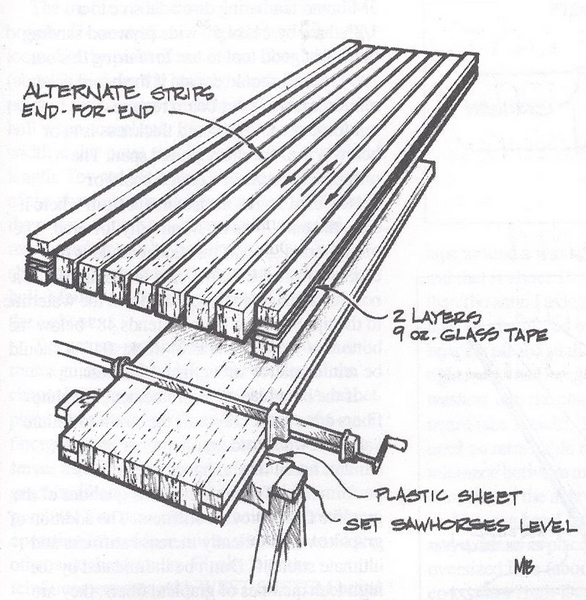
“Turn every other ripping end-for-end to neutralize the effects of any grain that does not run exactly parallel to the blank, and to reduce tendencies to twist. Rotate the rippings 90 degrees to expose the vertical grain and to permit easier shaping with a plane.
The selection of a proper camber and section can be a subject of great theoretical debate. One can become intimidated with technical terms such as thickness distribution, Reynolds number, boundary layer, and so on. These terms do relate to the subject, however, for the builder/sailor whose boat floats forlornly in need of a rudder blade the following will do just fine. In fact, the best designers and builders will be hard-pressed to do better.
An excellent choice for most craft is a realistically accurate and fair NACA (National Advisory Committee for Aeronautics) 0012 airfoil, where maximum board thickness is 12% of the fore/aft length (chord length). Maximum thickness is located about 30% of the chord length measured from the leading edge (see sketch). The dimensions used to establish a specific shape (called offsets) are given in the appendix of Abbott & Doenhoff’s The Theory of Wing Sections. You’ll also find further information in my article How to loft Airfoil Sections.
From offsets make a good drawing of half the section on transfer paper.
Western red cedar and redwood are good choices of wood to use for rudder blades and centerboards for boats up to 25 feet. Both of these woods bond very well are generally clear and straight-grained, have good dimensional stability, are easily worked and affordable. Cedar is just a little heavier than the foams used for rudders, is much stiffer, and has far greater shear strength values. On larger craft, a higher-density material like African mahogany is a better choice. Oak is not a good choice.
Buy flat-grained 2’x6″s or 2’x8″s, and then rip them to the designed board thickness. Turn every other ripping end-for-end to neutralize the effects of any grain that does not run exactly parallel to the blank, and to reduce tendencies to warp or twist (see sketch). Rotating the rippings 90 degrees to expose vertical grain will permit easier shaping with a plane. The last trick is to rip the end pieces of the nose and tail in half. Bonding with a couple of layers of glass tape between keeps the fine edge of the tail from splitting too easily and offers a precise centerline.
Bond the ripping with a slurry of epoxy and 404 High-Density filler. Plastic strips prevent inadvertent bonding to leveled sawhorses (see sketch). With both sawhorses leveled, you’re positive no twist exists in the laminated blank. Bar clamps should be snugged until excess glue squeezes from the joints. Over tightening only stresses joints and tends to squeeze all the adhesive from them. When the laminate is cured, a light planing to clean the surfaces is all that is needed before shaping begins.
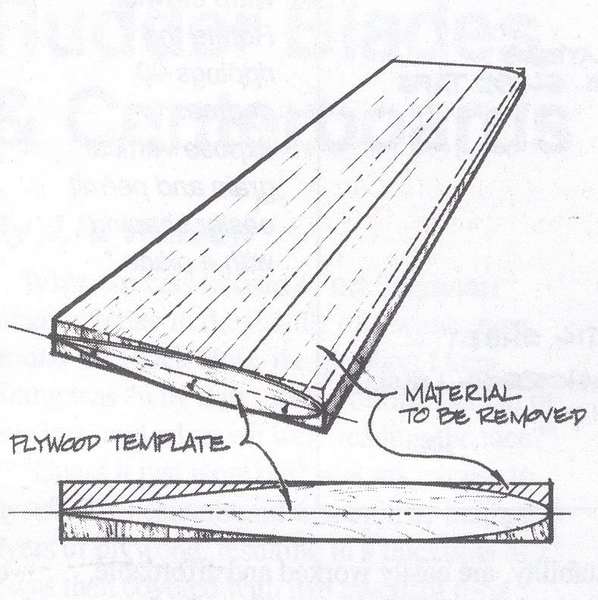
Centerboards and rudder blades are often overlooked components that are vital to a boat’s performance.
First, tack the 1/8″-thick plywood template that describes the cross-section shape to the blank’s ends. This is sawn from the impression made when traced with the transfer paper you originally drew it on. The key to producing an accurate and symmetrical board is maintaining a systematic removal of material from one side, then from the other. To do this, mark the shape to be removed, stick to straight-line shapes (see sketch). Use a smoothing plane to remove the wood.
After planing to the guidelines on one side, flip the blank over and plane the same shape on the other side. The procedure is similar to producing a round shape from a square by first forming an octagon, and then flattening the resulting eight corners to produce a 16-sided shape and refining that until very minute flat surfaces exist. Fifty-grit sandpaper bonded with 3M brand feathering disc adhesive to a 1/2″-thick by 11’x4.5″-wide plywood sanding block is a good tool to use for fairing this out.
Now you should decide if the board needs reinforcement. Your board requires reinforcement if the chord thickness is at or below 4% of the unsupported span. The unsupported span of a daggerboard or centerboard is that measurement from where it exits the hull, to its tip when fully lowered. The unsupported span of the rudder blade is the distance from the rudder case to the tip. If it is a non-retracting blade, measure from the waterline to the tip. So, if the board extends 48″ below the bottom of the hull and is 2″ thick, .04″, it should be reinforced for strength and stiffness.
If the board needs reinforcement, graphite fibers are a good choice as the strain-to-failure values of wood and graphite fiber are quite similar, hence they enhance each other’s performance. The high-modulus qualities of the graphite fibers provide stiffness. The addition of graphite will efficiently increase stiffness and ultimate strength. Don’t be intimidated by the high-tech qualities of graphite fibers, they are easy to work with.
The amount of reinforcement needed is usually figured at 10% chord thickness. Using the same board for our example, the board is 2″ thick, then 10% equals .20″ total reinforcement, .10″ per side. Graphite fiber tows are .01″ thick, so 10 tows per side should give the necessary reinforcement to do the job.
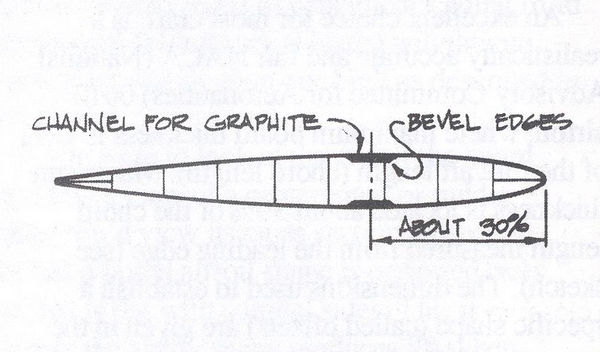
The graphite fibers will be laid into a channel routed into the shaped centerboard.
The graphite fibers will be laid into a channel that is routed into the shaped board (see sketch). The specific depth of the channel is determined by the above rule. Make the channel a little deeper than what’s required (1/16″) so you won’t be sanding the graphite fibers.
The profile of the channel is similar on all boards. The centerline of the channel is usually located at the point of maximum chord thickness (about 30% from the leading edge). The widest point of the channel is where the board exits the hull when completely lowered. The channel width at this point should be about 16% of chord length. Toward the ends of the board, the width of the channel narrows by about one-third that of the widest dimension. Keeping this in mind, more graphite can be laid in that area, a little above and more below that point that exits the hull. Maintain a consistent channel depth throughout.
Take a one-inch-square stick to serve as a router guide. It’s best to bevel the edge of the channel to reduce stress concentration. A rabbet plane serves best for this task. A layer of 6-oz fiberglass cloth is laid in the channel first (this serves as an interface between the wood and graphite fiber), followed by the schedule of graphite. You can complete the entire bonding operation for a side in one session. Try to do the other side the next day. Finally, fair the reinforcement area with WEST SYSTEM brand epoxy and a low-density filler.
A layer of 6-oz woven-glass fabric should then be bonded to the faired board to improve the cross-grain strength and abrasion resistance. The radius of the leading edge should be about a 1% radius of the chord length, and may not permit the fiberglass fabric to lie flat around the radius. In that event, cut a strip of woven glass fabric on the bias (which will lie around a tighter radius) and bond it around the leading edge.
It is better to leave the trailing edge slightly squared rather than razor-sharp. This will cause less drag and the centerboard will be less vulnerable to damage. Flatten the trailing edge to 1/16 or 1/8 of an inch on small boards, and closer to 1/4 of an inch on larger boards.
Any board, no matter how stiff, will deflect. To prevent the axle hole that the centerboard pivots on from binding when deflection occurs, make the hole somewhat larger than the pin diameter. The perimeter of the axle hole should be thoroughly protected with fiberglass, as exposed end grain can absorb moisture.
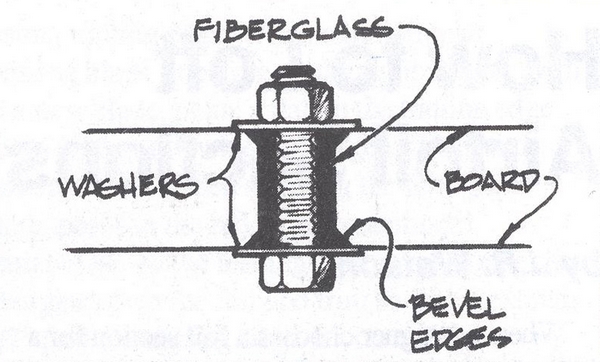
To prevent the axle hole from binding when deflection occurs, make the hole a little larger than the pin diameter.
Abrasion of the axle against the axle hole dictates that you should bond fiberglass into the hole’s perimeter. To do that, wrap fiberglass tape around a waxed (use auto paste wax) metal rod that is about 10 to 15% larger in diameter than the actual axle pin. The hole should be heavily chamfered on each side, so when the wet layup is placed in the hole and the nuts tightened, the fiberglass is pressed by the large washers into the chamfers on both sides of the board (see sketch). The same procedure may be used on retractable rudder blades, but the tolerance between axle hole diameter and the diameter of the axle pin should be closer.
You can bond control lines for centerboards and rudders-in-place by wetting a slightly oversized hole (about 1.5″ to 2″ deep) with epoxy/404 High-Density filler mixture. It helps to mark the hole’s depth on the rope with vinyl electricians tape to serve as a guide. Then, after soaking that end of the rope to be bonded in epoxy for a minute or so, shove it in the full depth of the hole.
Centerboards and rudder blades are often overlooked components that are of vital importance to a boat’s performance. Built correctly, they will reliably operate with the efficiency of a fish’s fin, and you should note a measurable improvement in the quality of pointing and steering of your windship.
References:
1. Jozset Bodig, Ph.D., Benjamin A Jayne Ph.D., Mechanics of Wood and Wood Composites 2. Johnston, Ken, Some Thoughts on Rudder Sections , Multihulls Magazine (Jan/Feb 1980) 3. Eck Bransford, Everything You Ever Wanted To Know About 505 Fins 4. Lindsay, Mark, Centerboards and Rudders , Yacht Racing/Cruising Magazine (April 1981) 5. Abbott and Doenhoff, Theory of Wing Sections, Dover Publications, Inc. New York (1959) 6. Captain James R. Watson, How to Loft Airfoil Sections , Epoxyworks 1 (Fall 1992)
- New Sailboats
- Sailboats 21-30ft
- Sailboats 31-35ft
- Sailboats 36-40ft
- Sailboats Over 40ft
- Sailboats Under 21feet
- used_sailboats
- Apps and Computer Programs
- Communications
- Fishfinders
- Handheld Electronics
- Plotters MFDS Rradar
- Wind, Speed & Depth Instruments
- Anchoring Mooring
- Running Rigging
- Sails Canvas
- Standing Rigging
- Diesel Engines
- Off Grid Energy
- Cleaning Waxing
- DIY Projects
- Repair, Tools & Materials
- Spare Parts
- Tools & Gadgets
- Cabin Comfort
- Ventilation
- Footwear Apparel
- Foul Weather Gear
- Mailport & PS Advisor
- Inside Practical Sailor Blog
- Activate My Web Access
- Reset Password
- Customer Service

- Free Newsletter

Tartan 30: An Affordable Classic

Ericson 34-2 Finds Sweet Spot

How to Sell Your Boat

Cal 2-46: A Venerable Lapworth Design Brought Up to Date

Solar Panels: Go Rigid If You have the Space…

Leaping Into Lithium

The Importance of Sea State in Weather Planning

Do-it-yourself Electrical System Survey and Inspection

When Should We Retire Dyneema Stays and Running Rigging?

Rethinking MOB Prevention

Top-notch Wind Indicators

The Everlasting Multihull Trampoline

What Your Boat and the Baltimore Super Container Ship May Have…

Check Your Shorepower System for Hidden Dangers

DIY survey of boat solar and wind turbine systems

What’s Involved in Setting Up a Lithium Battery System?

Waste Not is the Rule. But How Do We Get There?

The Scraper-only Approach to Bottom Paint Removal

How to Handle the Head

The Day Sailor’s First-Aid Kit

Choosing and Securing Seat Cushions

Cockpit Drains on Race Boats

Re-sealing the Seams on Waterproof Fabrics

Safer Sailing: Add Leg Loops to Your Harness

Waxing and Polishing Your Boat

Reducing Engine Room Noise

Tricks and Tips to Forming Do-it-yourself Rigging Terminals

Marine Toilet Maintenance Tips

Learning to Live with Plastic Boat Bits
- Sailboat Reviews
New J/95 Centerboard Sailboat is Fit for Shallow Water
J/boats new shoalsailer redraws the playing field for fast daysailers..
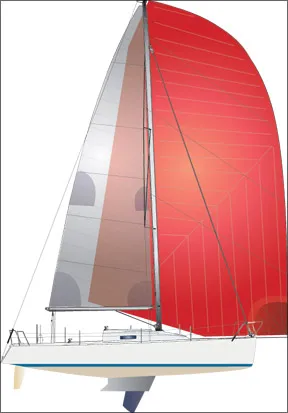
Given the grief that poor centerboard designs from the 1970s have caused sailers over the years, we were surprised to learn that J/Boats-known for its measured approach to the boat business (don’t let that radical backslash fool you)-put a centerboard in its new J/95.
Yes, swing-keel centerboards, those bronze, steel, or fiberglass foils that hinge from the keel like the blade on a Swiss army knife, are making a comeback. This is great news for shoalwater sailers who, for lack of other options, have tolerated decades-old centerboarders and the many ailments that plague them-corroded lifting cables, pulverized turning sheaves, and a thunk, thunk, thunk in the centerboard trunk. Fortunately for them, advances in materials and design have yielded a whole new breed of centerboarder. The J/95, it is safe to say, is not your fathers Irwin 38.
The last time centerboards were all the rage, through the 1950s and into the 1960s, it was because Northeast sailors didnt want to leave their good crystal at home when they raced off to Bermuda. In the Cruising Club of Americas (CCA) quest for a rating rule that favored velvet and walnut interiors, centerboarders gained a significant edge, and few boats took advantage of rule loopholes as well as the legendary Sparkman & Stephens-designed Finisterre. The boat achieved myth-like status in 1960, when owner and skipper Carleton Mitchell won the Newport to Bermuda race for an unprecedented third consecutive time.
When Mitchell died in 2007 at the age of 96, he was rightly hailed as a sailing legend. A one-time underwear salesman who married into a fortune, he served as a Navy combat photographer in World War II before pursuing in earnest a lifelong passion for sailing. In the decades after the war, he earned renown not only for his seamanship but also for his talent as a magazine writer, author, and photographer. The museum at Mystic Seaport in Connecticut holds his large collection of manuscripts and more than 20,000 of his photographs.
Today, Mitchell and Finisterre stand as icons from a golden era, doomed to an eternal afterlife in new boat marketing literature. But when J/Boats alluded to Carleton Mitchell and Finisterre in brochures for the J/95, we wanted a bottle of whatever theyre putting in the company watercooler. Except for a hinged keel and an inclination to float, the two boats are as alike as Neil Simons Felix and Oscar.
Introduced last year, the balsa-core J/95 is a lightweight, 30-foot daysailer with a plumb bow, twin-rudders, a sleek hull form, and a Spartan interior. Launched in 1954, 38-foot Finisterre is a double-planked heavy displacement racer-cruiser with a spoon bow, yawl rig, and almost swanky accommodations (the last three are all convenient CCA rule-beaters).
The reference to Finisterre is smart promotional shtick. The name offers J/Boats-and it is hardly the only company that has drafted on Finisterres fame-an instant connection to the sailors it seeks to entice with the J/95.
Like Morris, Sabre, Friendship, and the other makers of high-end trophy daysailers we reviewed in the January 2009 issue, the J/95 is aimed at recession-proof sailors who share Mitchells aesthetic tastes and passion for sailing. But unlike previous entries in this market, the J/95 sails in four feet of water and offers, in many ways, a saner approach to what dealers are calling “right-sizing.” (No salesman worth his salt would utter the more accurate word, “downsizing,” to a potential buyer of these boats.)
End of an era
The J/95 is the brainchild of Rod Johnstone, a man whose fairy-tale success is well known to longtime PS readers. Back in 1976, Johnstone built a fast little boat called Ragtime in his garage in Connecticut. It promptly trounced the local racers, who started asking Johnstone for their own.
At the time, Johnstone was an ad salesman for Soundings magazine and turned to his client Everett Pearson of TPI Inc. to produce the boat as the J/24. (The J is for Johnstone, the slash, were convinced, is meant to torment copy editors.) J/24s started rolling off the production line at TPI in February 1977. Bob Johnstone, the family marketing ace, left AMF Alcort (makers of the Sunfish) to join Rod as a partner, and crank up the boat sales to unprecedented numbers. Still in production, the J/24 remains one of the most popular sailboats in the world.
The mission for the J/95 is one of those hyphen-rich, have-your-cake-and-eat-it-too quests. Rod Johnstone wanted a wind-in-your-hair, but easy-to-sail weekender that catered to the huge population of sailors who must contend with depths of four feet our less. Being competitive in club or Performance Handicap Racing Fleet (PHRF), and, of course, a fantastically popular one-design class were also part of the dream.
“We wanted to make this a boat people would want sail, sail right up the river or creek, right up to their dock, sail in light winds, sail in 20 knots,” says Johnstone. “In my view, if you want to turn on the engine, this boat is a failure.”
When held up against the current crop of J/Boats, the J/95 is probably closest to the J/105, a popular one-design class boat launched in 1992. Both boats have similar deck layouts, and both feature a low cabintop and gentle sheer that give them good-looking profiles.
Although the J/105s deeper fin keel gives it a performance edge, Johnstone says that in brisk conditions, the J/95, with 2,250 pounds of lead ballast, can stay with the J/105 in a heavy-weather beat. Johnstones explanation for this sheds some light on why many CCA-rule boats remain popular as cruisers.
While the long bulb keel that is the norm in todays racing boats offers superior lift, it can create a pendulum-like pitch and roll and in a seaway. The J/95, with the center of ballast closer to the flotation plane, resists this tendency, making for a more efficient-and more comfortable-ride.
Of course, any of the J/95s gains during a rough beat are soon relinquished to the J/105s longer waterline on a downwind leg, but the point is made.
Compared to contemporary production shoal-draft boats, the J/95 has a key design advantage: twin rudders angled outward at 15 degrees. This means at least one rudder is always immersed, giving the boat predictable tracking, even when heeled. As pointed out in our February 2009 report on hull design, trying to steer the beamy Open Class-inspired hulls with a single shallow rudder can be maddening. In the most extreme cases, a modest puff of 16 knots sends the boat rounding up sharply to windward.
The price for the J/95s shallower draft is ultimate stability. According to J/Boats, the boat has a limit of positive stability of 126, well within the minimum of 120 recommended for offshore racing and fine for daysailing. The 200-pound centerboard doesn’t lock down, but should the board kick up in a grounding or crash downward a 160-degree capsize, it will connect with the soft lead keel and cause no harm to the hull. J/Boats said such an event would not damage the hull. (With our insurance premiums being what the are, we did not test this feature.)
Deck Layout
J/Boats has had plenty of practice pondering deck layouts on race boats, and those same details translate well to any good daysailer. As Johnstone points out, the features that bring efficiency on the race course-broad sidedecks, ergonomic cockpit layout, plenty of mechanical advantage-are equally kind to a titanium knees and hips.
“It just makes me sad to see people I know-friends, no less!-going out and getting power boats because they feel that they can’t sail anymore,” Johnstone grumbles. “And then they realize, too late sometimes, that they have to put up with all that noise.”
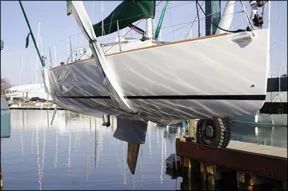
During the design phase, there was some discussion over tiller versus wheel. J/purists might clamor for a tiller, especially those bent on racing, but at what price? Cockpit space would suffer. Comfort and convenience, too.
The 44-inch Edson wheel fits nicely into the wide T-shaped aft section. Two angled chocks provide footing on a heel, and we found the windward rail to be a comfortable spot on a close reach. The transom is open, and the boat we sailed had an optional removable transom-seat locker. Even with the seat-locker in place, theres room behind the wheel.
The cockpit seats arent long enough for snoozing, and an extra inch of back support would be nice, but all in all, the cockpit caters well to crew comfort under way. The seats inside edges are angled upward slightly to anchor the tush, and the seat lockers offer ample space for sail and gear storage. The broad flat coaming is as comfortable a perch as the cockpit seats themselves. Owners can opt for either a full length toerail or one that ends forward of the cockpit. Teak is an option, but one of the appeals of the boat is its ease of maintenance.
The Harken sail controls are geared for minimal effort. The mainsheet (5:1-ratio with a 10:1-ratio fine-tuning adjustment), rides in front of the steering binnacle on an easily-trimmed traveler (4:1-ratio). A Hall Spars Quick Vang (5:1 ratio) handles boom tension.
The jibsheets lead to two 40.2STA two-speed self-tailing winches. The helmsman can easily trim the mainsheet from the windward rail, while the jib sheet winches are placed so that the trimmer can comfortably face forward. Casually seated on the coaming just in front of the wheel, the single-hander can tweak both the main and jib sheets.
The standard working jib is a roller-furling 105 that tacks easily through the foretriangle and leads to a jib track inside the shrouds. We kept the leads pinned just aft of the shrouds during the test sail and saw no need to change them. For PHRF racing, a second track is installed to handle the 150 genoa. (The boats PHRF rating is about 109.)
A Harken 32.2 two-speed self-tailing winch and a gang of three Spinlock rope clutches on the port side of the companionway tame the halyards and the centerboard. We didnt need the winch (or anti-inflammatories) to raise the centerboard, as the 5:1-ratio block and tackle gave plenty of mechanical advantage.
Passage fore and aft is wide and clear of obstructions, with stainless-steel handrails on the coachroof adding security. Eight-inch stainless steel cleats and a modest anchor locker round out the very functional deck layout.
Interior and Systems
With the J/95s emphasis on nice lines and a functional deck layout, its no surprise that the accommodations get the short shrift. Though its billed as a weekender, we call it a daysailer.
For boat camping, the layout takes care of the bare essentials. Two settee berths in the main cabin offer room to recline, but headroom, even when sitting, is tight. A Raritan head (served by a 14-gallon holding tank) shares space with a V-berth forward. A forward hatch and two ports keep the cabin aired out.
There is no nav station or galley, not even a stove, although hull No. 1 was equipped with AC shorepower and a microwave oven. A 48-quart cooler or a portable 12-volt Waeco fridge ( PS , May 2007) tucks aft of the port settee. An optional Group 27 house battery will keep the fridge running for a long day without charging.
Optional water tankage is in a 20-gallon bladder that feeds a pressure pump in the head and a cockpit shower. Fuel is in a 15-gallon tank beneath the port cockpit locker. PS generally prefers aluminum tanks for this purpose, but for a tank this small, a baffled polyethylene tank is a tolerable substitute.
The two-cylinder 14-horsepower Yanmar with a saildrive and Flex-O-Fold prop sits beneath slide-out companionway steps. Access is good except for servicing the water and primary fuel filters, when you need to make an awkward reach through a bulkhead cutout. J/Boats says it has worked closely with Yanmar to insure that the saildrive is protected from any galvanic corrosion. Regardless, engine zincs bear watching.
Now for the downers: Like some other Open Class imitators (Beneteau First 10R comes to mind), J/Boats hasn’t yet sorted out how to drain the boats shallow bilge without a sponge. The narrowest electric pump doesn’t fit into the tight squeeze in the sump. It sits on a riser pad, which means the last three inches of water make for an inviting frog pond.
To complicate matters, the hose on our test boats manual pump wheezed at a leaky hose union, rendering the pump useless. A leaky union-or any union at all-in an emergency bilge hose is not the sort of thing wed expect from J/Boats. (The local J/Boat dealer assured us this problem would be fixed immediately.)
We also took issue with the bilges drainage system. A single limber hole less than 3/4-inch in diameter separates the back section of the hull from the main bilge sump. Should a cockpit locker open in a knockdown and seawater flood the aft compartment, most of the water wouldnt reach the pumps until it flowed through that thimble-sized limber hole. In our view, the boat should either have freer flowing limber holes or a pump to serve each large compartment.
Finally, J/Boats was asleep at the wheel when they addressed the emergency tiller on our test boat. There was no dedicated place to stow the tiller, and the deck key used to install it was found in the cabin below, instead of with the tiller. Installed, the rudder worked fine, much better than others weve ranted about.
Performance
We test sailed hull No. 10 in the Gulf of Mexico off of Naples, Fla. The boat was equipped with racing cut Doyle Technora sails: a partially battened mainsail and a roller-furling 105 genoa. A 680-square-foot asymmetrical spinnaker can fly from the retractable bowsprit, but with squalls to the east and just two people on board, this spinnaker stayed in the forepeak.

True wind was from the east at 6-8 knots with gusts to about 17 knots when the rain came. Seas were 1-2 feet.
Under power at 2,800 RPM, the boat averaged 6 knots and at 3,250 RPM 7 knots. At wide open throttle in flat water, it held 7.4 knots. Handling under power with the twin rudders was excellent. With the centerboard up or down, the J/95 easily spun in its own length. Not only is this an advantage when docking, but should a crew member fall overboard, a well-drilled crew should be able to execute a near-perfect Quick Stop maneuver (see January 2010 issue).
On a close reach in about 8 knots of breeze, the boat averaged 5.3 knots and tacked through 92 degrees, including any leeway, with the board up. With the board down in about 12-14 knots of breeze, the boat averaged 6.3 knots and gained about 2 degrees to windward on each tack.
J/Boats advertises upwind speeds of 6.5 knots and tacking angles of less than 90 degrees with the board up, and angles better than 85 degrees with the board down. Based on the test boats performance, this is well within reach of a well-sailed, well-tuned boat. The fastest average speed under sail came when a squall brought about 15 knots of wind on the beam. With the true wind at 120 degrees, the boat marched off at 7.2 knots, taking the strongest gusts in stride.
In terms of handling and balance, the J/95 sailed exceptionally well, holding a groove better than many larger boats weve tested. Johnstone attributes the reliable helm control to the twin rudder design. Many good CCA-era boats, Johnston points out, ran into trouble when the wind piped up.
“On some of the old boats, and on many shoal-draft boats today, when the boat heels over, there just isn’t enough rudder in the water for it to do its job,” says Johnstone. “The twin rudders are key to making this design work.”
Board up or board down, the boat handled gusts extremely well, never once heeling excessively or fighting to round up. Close hauled and reaching, the boat balanced superbly, and even with the wind aft of the beam and the sails trimmed for speed, the helm delivered finger-tip control.
Although we could point the boat slightly higher with the 200-pound centerboard lowered, the most noticeable effect of lowering the board was a stiffer ride and a reduced angle of heel.
Given the anemic state of the new sailboat market, J/Boats initially expected to sell one J/95 a month until buyers hopped off the fence. Nine months into production, the company was on hull No. 18, and interest in the boat doesn’t show any sign of waning soon.
Its success can be partly attributed to the J/Boat name and the southward migration of aging Boomers, who are settling into retirement homes on the shallow estuaries of Florida and the Carolinas. No question, if you are a shallow-water sailor looking for a high-performance daysailer thats easy to sail right from your backyard dock, the J/95 has few peers. Whether the model takes off as a one-design fleet or the thin-water sailors preferred PHRF boat will depend on what the future holds.
One question mark is price. True, a bronze centerboard adds significant construction costs (about $15,000 according to Rod Johnstone), but a $180,000 day boat with camp-style amenities is a not our idea of a contender in the one-design realm. And if we were going to pay big money to pursue our passion, wed expect to see a little more attention to detail from the builder.
A second potential hurdle is the allure of a multihull. The Corsair Dash, reviewed in the May 2010 issue, is also well-adapted to shallow water, and goes for less than half the price of the J/95. The two are very different animals, but if a brisk high-performance ride in shallow water is your goal, multihulls have a strong appeal.
Over the long haul, the boat should hold its value well. J/Boats remains one of the most recognized names in performance sailing, and even some race scarred veterans hold their own on the used boat market. No, the J/95 is not Finisterre , but given our own experiences in the Gulf of Mexico, its an exciting option for a wide range of shallow-water sailors-not just the greybeards inspired by Carleton Mitchells exploits.
Bottom line: We like the J/95 concept, and its performance, even with the centerboard raised, is remarkable. Fitting out details could be improved, but we imagine the company will quickly address most of our gripes, which are not expensive fixes.
The J/Boats marketing allusion to Finisterre is just silly, but we suspect that if Mitchell were alive today, he would like the J/95s mission. As he confronted the inconvenient truths of old age, Carleton Mitchell, one of the most passionate and eloquent champions of sailing, spent his last years on the shoalwaters of Biscayne Bay, Florida … reluctantly driving a powerboat.
- Interior and Construction Notes J/95
- Interior and Construction Notes J/95 Cont.
- Download PDF Format

RELATED ARTICLES MORE FROM AUTHOR
Leave a reply cancel reply.
Log in to leave a comment
Latest Videos
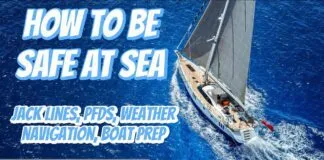
Safety At Sea For You & Your Family – The Joe...

What’s The Best Vinyl Window Cleaner for Your Boat?

40-Footer Boat Tours – With Some Big Surprises! | Boat Tour

Electrical Do’s and Don’ts
- Privacy Policy
- Do Not Sell My Personal Information
- Online Account Activation
- Privacy Manager
- Login / Register

- Naples Sabot
Boat Covers
- Installation Guides

Sabot Parts
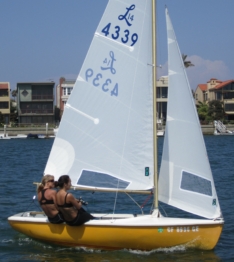
Lido 14 Parts
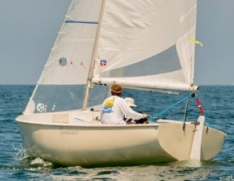
Cal 20 Parts

Nationally recognized Gresham blades have consistently won many national championships and major regattas. We carry a complete line of new and replacement parts for the Lido 14, Naples Sabot, Cal 20, and more. We have been serving the marine industry since 2000 and specialize in boat repair, boat restoration, rigging and tuning, and obsolete parts.
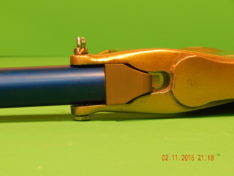
Tiller Head
Lido 14 Parts $ 145.00 – $ 199.00 Choose Options
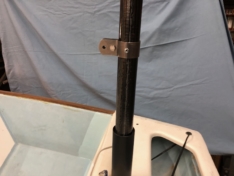
Carbon Mast Naples Sabot
Sabot Parts $ 975.00 + Add to cart
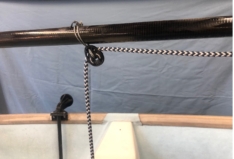
Carbon Boom Sabot
Sabot Parts $ 875.00 $ 775.00 + Add to cart
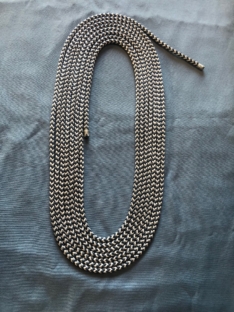
Bzzz Main Sheet Sabot
Sabot Parts $ 55.00 + Add to cart
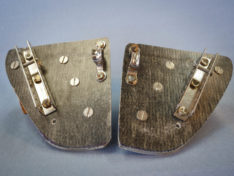
Shroud Backing Plate
Lido 14 Parts $ 195.00 + Add to cart
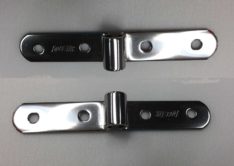
Gudgeon Special (pair)
Cal 20 Parts $ 69.00 $ 49.00 + Add to cart

Pintles Special (pair)
Lido 14 Parts $ 79.00 $ 59.00 + Add to cart
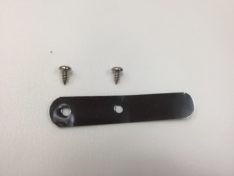
Rudder Keeper
Lido 14 Parts $ 20.00 + Add to cart
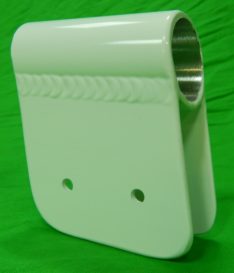
Rudder Head by Boat Type
Cal 20 Parts $ 65.00 – $ 135.00 Choose Options
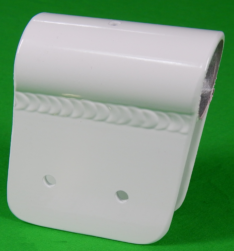
Rudder Head by Size
Cal 20 Parts $ 65.00 – $ 110.00 Choose Options
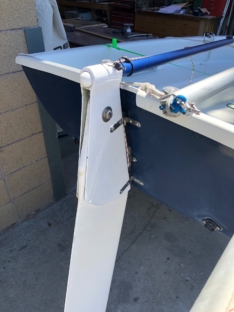
Kick Up Rudder
Blades $ 495.00 $ 475.00 + Add to cart
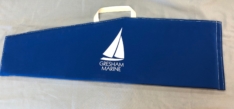
Cal 20 Parts $ 195.00 – $ 250.00 Choose Options
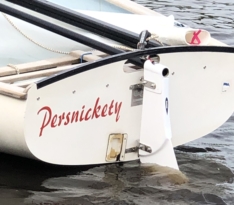
Thistle Rudder
Blades + Add to cart
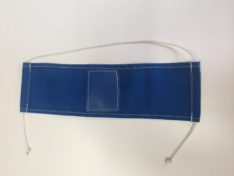
Mast Step Wrap
Lido 14 Parts $ 24.99 + Add to cart
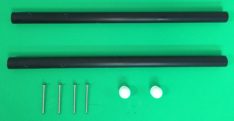
Centerboard Trunk Stiffener Kit
Lido 14 Parts $ 55.00 Choose Options
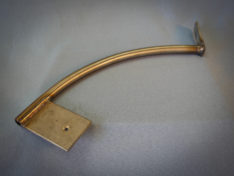
CenterBoard Horn
Lido 14 Parts $ 99.00 $ 89.00 + Add to cart

Centerboard Hangers – Lido 14
Lido 14 Parts $ 75.00 + Add to cart
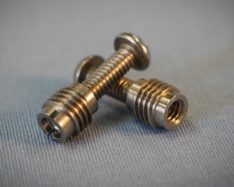
Barrel Nuts
Lido 14 Parts $ 19.00 + Add to cart
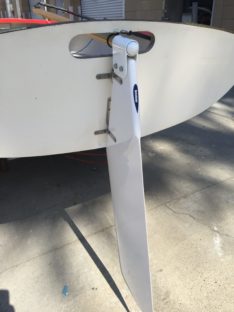
Lido 14 Rudder
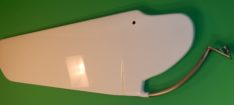
Lido 14 Centerboard
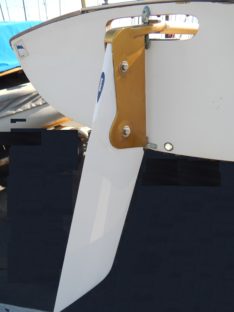
Lido 14 Rudder-Classic
Blades $ 695.00 $ 595.00 + Add to cart
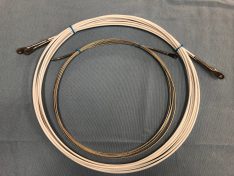
Lido 14-Shroud Special
Lido 14 Parts $ 250.00 $ 225.00 Choose Options
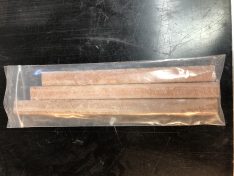
Lido 14 Rail Stiffeners
Lido 14 Parts $ 60.00 + Add to cart
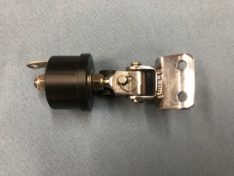
Lido 14 Parts $ 129.00 $ 115.00 + Add to cart
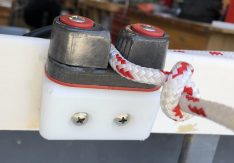
Jib Cleat Brackets
Lido 14 Parts $ 55.00 – $ 110.00 Choose Options
Used Lido 14 Rudders
Blades $ 325.00 $ 275.00 + Add to cart
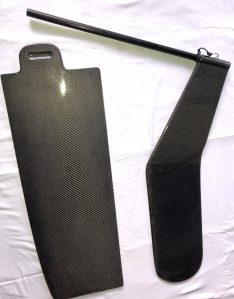

El Toro Rudder & Centerboard
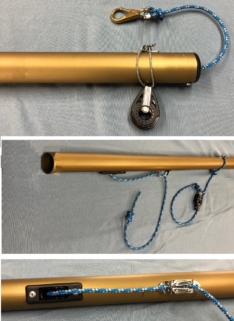
New Lido 14 Boom Complete Special
Lido 14 Parts $ 900.00 $ 799.00 + Add to cart
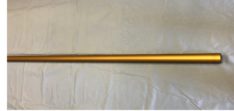
Lido 14 Boom Extrusion
Lido 14 Parts $ 175.00 – $ 275.00 Choose Options

Lido 14 Boom Stiffener
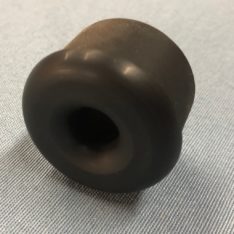
Boom End Outhaul Exit
Lido 14 Parts $ 21.00 + Add to cart
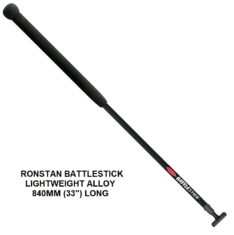
Ronstan Tiller Extensions
Lido 14 Parts $ 65.00 Choose Options
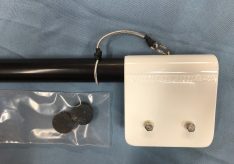
Cal 20 Tiller and Rudder Head
Cal 20 Parts $ 295.00 + Add to cart
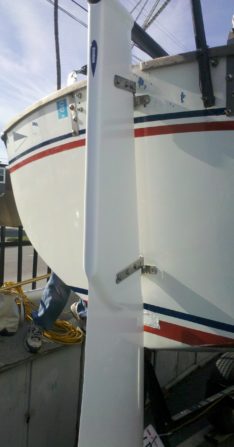
Cal 20-Rudder
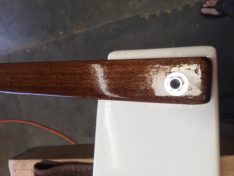
Cal 20 Tiller Yoke Wood
Cal 20 Parts $ 225.00 + Add to cart
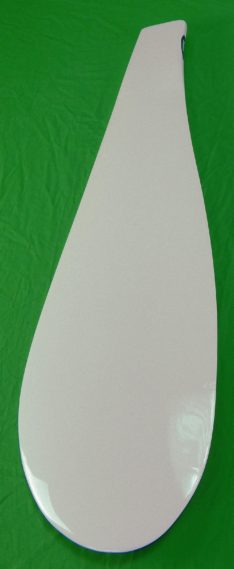
Naples Sabot Leeboard
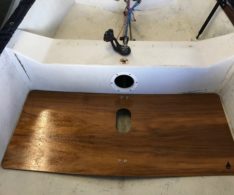
Naples Sabot Floorboard
Sabot Parts $ 295.00 – $ 425.00 Choose Options
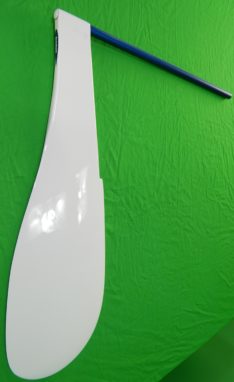
Naples Sabot Rudder
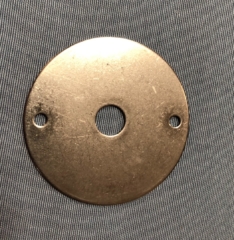
Naples Sabot Lee Board Washer
Sabot Parts $ 20.00 Choose Options
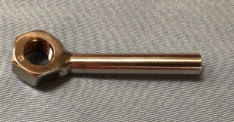
Naples Sabot Leeboard Handle – Free Shipping
Sabot Parts $ 40.00 + Add to cart
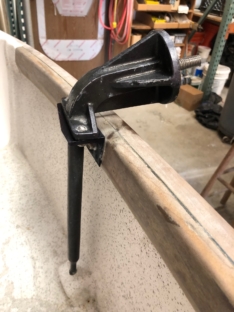
Naples Sabot Leeboard Arm. Sale!
Sabot Parts $ 225.00 $ 195.00 + Add to cart
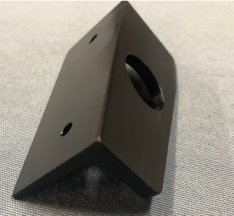
Naples Sabot Leeboard Gunnel Bracket
Sabot Parts $ 75.00 + Add to cart
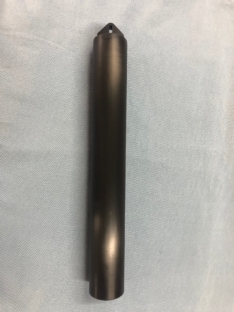
Naples Sabot Mast Tube
Sabot Parts $ 250.00 + Add to cart
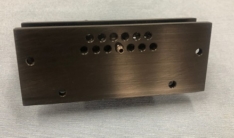
Naples Sabot Mast Rake Adjuster
Sabot Parts $ 160.00 + Add to cart
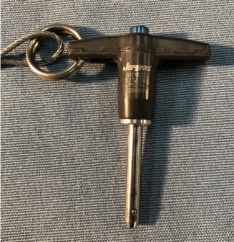
T-Handle Quick Pin
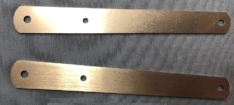
7″ Stainless Steel Straps
Sabot Parts $ 39.00 + Add to cart

5″ Stainless Steel Strap
Sabot Parts $ 36.00 + Add to cart
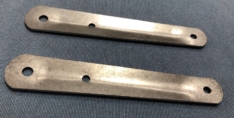
5″ Curved Stainless Steel Strap
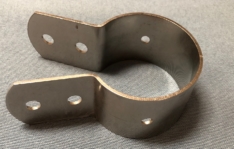
Round Gooseneck for the Naples Sabot
Sabot Parts $ 30.00 + Add to cart
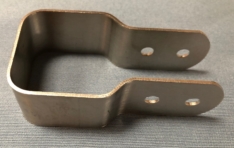
Square Gooseneck for the Naples Sabot
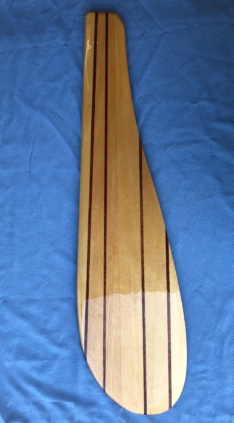
Sabot Leeboard and Rudder
Blades $ 275.00 – $ 625.00 Choose Options
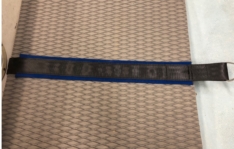
Hiking Strap Kits
Lido 14 Parts $ 65.00 – $ 110.00 Choose Options

Catalina 30 Spreaders (wood)
Parts $ 625.00 + Add to cart
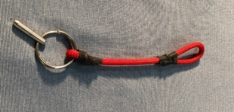
Cal 20 Parts $ 20.00 + Add to cart
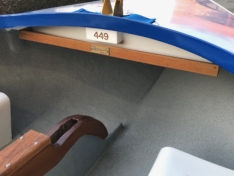
Lido 14 Teak Bow Tray
Lido 14 Parts $ 195.00 $ 155.00 + Add to cart
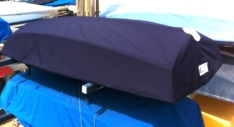
Bottom Cover-Naples Sabot
Boat Covers $ 411.24 – $ 522.74 Choose Options
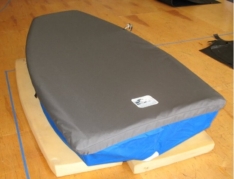
Top Cover-Naples Sabot
Boat Covers $ 254.17 – $ 307.91 Choose Options
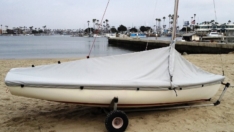
Top Cover-Lido 14
Boat Covers $ 554.70 – $ 605.23 Choose Options
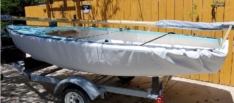
Bottom Cover-Lido 14
Boat Covers $ 405.28 – $ 453.65 Choose Options
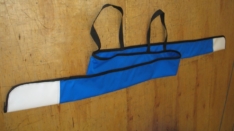
Mast & Boom Cover-Naples Sabot
Boat Covers $ 212.35 – $ 247.85 Choose Options
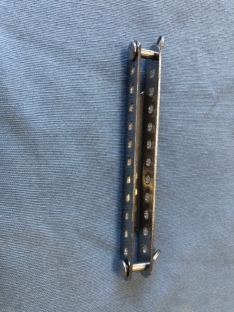
Forestay Adjuster
Lido 14 Parts $ 36.00 + Add to cart
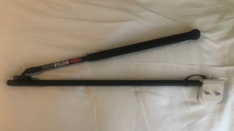
Sabot Tiller and Rudder Head
Sabot Parts $ 254.00 Choose Options
Choosing a Centerboard or Fixed Keel Sailboat
- Snowboarding
- Scuba Diving & Snorkeling
Centerboard or Fixed Keel?
You need to consider many different questions when deciding what kind of sailboat is best for you .
Depending on the general size range of the sailboats you may be interested in, you may need to choose between fixed-keel boats and centerboard (or swing keel or daggerboard) boats. This article will help you choose which is best for your needs.
As only a very general rule, most sailboats over 20-something feet have fixed keels. Most sailboats under 15 feet or so have centerboards. But there is a wide range of boats from 12 to about 25 feet with either a fixed keel or a centerboard. For example, in this photo, the boat on the left has a fixed keel, while the boat on the right, of about the same size, has a centerboard.
If you are shopping for a sailboat in this range, you should understand the differences between these fundamental types of keels.
Fixed Keel Sailboats
Virtually all large racing and cruising sailboats have a fixed keel. A keel is needed to keep the boat from being blown sideways at all points of sail except downwind. A keel also provides weight low under the water to lower the boat’s center of gravity below the waterline, which is needed so that the boat bobs back upright if knocked over by wind or waves.
Sailboats have many different types of fixed keels , such as full keels (see photo) and fin keels. If you decide a fixed keel boat is best for your sailing purposes, consider also which type keel best meets your needs.
Centerboard Sailboats
On centerboard sailboats, the centerboard functions like a keel to keep the boat from being blown sideways. (All sailboats need a keel of the board for this reason: the narrow, flat surface of the board or keel produces little drag when the boat moves forward but resists motion sideways.)
The centerboard usually hangs down below the hull from a pivot at one end. It can be raised by pulling a line that swings the centerboard up into a centerboard trunk along the center of the boat, as shown in the photo.
Some small boats, like a Sunfish, have a removable daggerboard rather than a centerboard. The daggerboard has the same function, but rather than swinging down, it is inserted like a blade down through a slot in the hull to protrude like a thin keel below the hull. A swing keel is another term used for a type of keel that like a centerboard can be raised.
A centerboard may or may not be weighted. If the centerboard is weighted, then it also provides weight low in the water, like a keel, to help keep the boat upright (although not as much weight as a fixed keel can supply). If the centerboard is not weighted, like the fiberglass centerboards of many small sailboats, then sailors must keep the boat upright by positioning their own weight on the upwind side of the boat.
Benefits and Disadvantages of Fixed Keel and Centerboard Sailboats
Fixed keels and centerboards each have their own benefits but also disadvantages. When deciding what type of boat to buy, be sure you have considered these differences:
Advantages of a Fixed Keel:
- Provides the most ballast to resist capsizing and ensure recovery from a capsize
- More effective at preventing leeway (sideways movement of the boat)
- Crew do not have to position body weight to prevent capsizing (see photo)
- No centerboard moving parts to break or jam
Disadvantages of a Fixed Keel:
- With deeper displacement, the boat cannot enter shallow water
- The boat is heavier for its size (usually an issue only when trailering)
- With deeply fixed keels, the boat may not fit on a trailer at all (25 feet is typically the largest trailerable fixed keel sailboat) - requiring the inconvenience and expense of a boatyard for launching, haulout, and storage
Advantages of a Centerboard:
- The centerboard can be raised to decrease displacement to allow the boat into shallower water – and it should swing up and back if it hits the bottom when sailing with it down
- The centerboard can be raised for faster downwind sailing
- The centerboard can be partially raised if needed to provide better boat balance
- Most centerboard boats can be trailered and easily launched and hauled out on boat ramps (larger centerboard boats may require deeper ramps)
A popular trailerable centerboard sailboat is the MacGregor 26 , which with its water ballast has the advantages of centerboard boats but not all the disadvantages.
Disadvantages of a Centerboard:
- Provides no (unweighted board) or less (weighted board) ballast, compared to a fixed keel, to resist capsizing and ensure recovery from a capsize
- Less effective than a larger fixed keel at preventing leeway (sideways movement of the boat)
- The centerboard trunk takes up space in the boat’s cockpit or cabin
- The centerboard pivot and control line involve moving parts and can jam or break
Finally, some historic crafts have leeboards instead of centerboards; these boards, mounted outside the hull on both sides, can be pivoted down like a centerboard to resist leeward motion. And some sailboats have fixed keel-centerboard combinations, which provide ballast and prevent leeward motion even when the centerboard is up but also provide the option to attain less leeward motion sailing upwind when the board is down.e a centerboard to resist leeward motion. And some sailboats have fixed keel-centerboard combinations, which provide ballast and prevent leeward motion even when the centerboard is up but also provide the option to attain less leeward motion sailing upwind when the board is down.
- Choosing an Inboard or Outboard Engine
- Learn How to Sail a Small Sailboat – 1. The Parts of the Boat
- The Sunfish: A Perfect Lake or Urban Sailboat
- The Types of Sailboat Rudders
- How to Tow a Dinghy Behind a Sailboat
- How to Use a Mainsheet Traveler
- How to Tack a Sailboat
- How to Anchor a Sailboat
- How to Gybe a Sailboat
- Using a Sailboat Boom Vang in Sailing
- Do It Yourself Boat Trailer Tongue Extension
- Simple Reefing System for Sailors
- How to Heave To a Sailboat
- Control Your Tiller Without a Tiller-Tamer
- How to Rig a Preventer Line
- How to Use a Topping Lift
Centerboard Sailboat: The Ultimate Guide for Smooth Sailing
by Emma Sullivan | Jul 18, 2023 | Sailboat Maintenance

Short answer centerboard sailboat:
A centerboard sailboat is a type of sailing vessel that includes a retractable fin-like appendage called a centerboard. Centerboards provide stability and help prevent lateral drift when sailing upwind. They can be raised in shallow waters or when the boat is not under sail, and lowered for enhanced stability while underway.
Introduction to Centerboard Sailboats: Exploring the Basics and Benefits
Sailing has captivated humans for centuries, offering a unique combination of adventure, skill, and mastery of nature. If you’re considering delving into the world of sailing or if you’re simply curious about different types of sailboats, centerboard sailboats are worth exploring. In this blog post, we will provide a detailed introduction to centerboard sailboats by discussing the basics and exploring their numerous benefits.
First things first – what exactly is a centerboard sailboat? In essence, a centerboard is a retractable keel that enables sailors to adjust their boat’s stability and performance based on various sailing conditions. Unlike regular keels which are fixed in place, centerboards can be raised or lowered at will, allowing sailors to navigate shallow waters with ease. By altering the draft (the depth that extends below the waterline), sailors can optimize their speed and maneuverability depending on factors such as wind direction or water depth.
One notable advantage of centerboard sailboats is their versatility. Whether you enjoy leisurely coastal cruising or long-distance ocean passages, these boats offer adaptability rarely found in other types of vessels. When cruising in deep waters where extra stability and speed are desired, the centerboard can be lowered fully for optimal performance. On the other hand, when navigating shallow waters such as remote anchorages or coastal areas with hidden obstacles, raising the centerboard ensures peace of mind by preventing damage to the keel.
Moreover, these boats excel in sailing upwind due to their ability to reduce leeway – sideway drift caused by wind pushing against the hull. By lowering the centerboard partially or completely while tacking into the wind, sailors can minimize leeway and maintain a more efficient course towards their destination.
Centerboard sailboats also boast superior maneuverability compared to fixed-keel vessels. In tight spots such as crowded marinas or narrow channels, raising the centerboard allows for a reduced turning radius and smoother navigation. This added maneuverability opens up opportunities to explore hidden coves and picturesque spots that might otherwise be inaccessible with a larger fixed-keel boat.
Aside from their practical advantages, centerboard sailboats also offer a unique sailing experience. Adjusting the draft by raising or lowering the centerboard demands a certain finesse and understanding of how wind and water interact with the boat. This constant interaction between sailor and vessel creates an engaging dynamic that keeps even seasoned sailors on their toes, making each sailing trip an exciting adventure filled with challenges and rewards.
In conclusion, exploring the world of sailing would be incomplete without considering the wonders of centerboard sailboats. Their retractable keel provides versatility, adaptability, and enhanced performance – attributes that make them ideal choices for both novice sailors embarking on coastal journeys and experienced sailors seeking new challenges. The ability to navigate shallow waters effortlessly, optimize upwind sailing performance, enhance maneuverability in tight spots, and experience the thrill of managing draft adjustments all contribute to the undeniable appeal of these remarkable vessels.
So whether you’re yearning for tranquil coastal explorations or dreaming of conquering challenging ocean passages, investing in a centerboard sailboat is undoubtedly a choice that will enrich your sailing endeavors while broadening your horizons in ways you never thought possible!
How Does a Centerboard Sailboat Work? A Step-by-Step Guide
Title: Unraveling the Mechanics of a Centerboard Sailboat: A Comprehensive Step-by-Step Guide
Introduction: Sailing is synonymous with freedom and adventure, and knowing how different sailing boats work can enhance our appreciation for this timeless activity. In this guide, we delve into the intriguing mechanics of centerboard sailboats. So, buckle up your life jackets and prepare to set sail on a journey through the inner workings of these marvelous vessels.
Step 1: Understanding the Basics The fundamental principle behind a centerboard sailboat is its ability to utilize a retractable keel-like structure called the centerboard. Unlike fixed keels present in traditional sailboats, centerboards are adjustable in depth, making them versatile for various water conditions. The centerboard serves two primary purposes: providing lateral resistance against wind pushing against sails and counteracting leeway or sideways drift caused by crosswinds.
Step 2: Analyzing Components To grasp how a centerboard sailboat operates, it’s crucial to familiarize ourselves with its vital components. These include the hull (or body), mast, boom (horizontal spar at the bottom of the mainsail), rudder, sails, and of course, the star player – the adjustable centerboard.
Step 3: Preparation Stage Before embarking on any sailing expedition with a centerboard boat, preparations must be made. This involves selecting appropriate sails based on wind conditions and attaching them securely to masts and booms. Additionally, checking all rigging elements such as ropes, shrouds, halyards ensures optimal functionality during navigation.
Step 4: Setting Sail As you hoist those vibrant sails aloft while feeling the exhilarating breeze fill them up; it’s essential to visualize how forces interact and propel your vessel forward. When wind encounters sails at an angle known as “close-hauled,” it creates lift akin to an airplane wing that propels the boat forward. Simultaneously, the sailboat’s hull exerts an opposing force called drag against the water.
Step 5: Balancing Forces with the Centerboard To prevent your centerboard sailboat from drifting sideways due to crosswinds, adjusting the centerboard depth is crucial. By partially extending or retracting it into a trunk located in the center of the boat’s hull, lateral resistance against leeway is maximized. Shallower depths allow for reduced drag while sailing upwind, enabling higher speeds. Conversely, deeper settings enhance stability when running downwind or across waves.
Step 6: Steering and Maneuvering While sails generate forward propulsion, steering and maneuvering your vessel require a well-functioning rudder system. The rudder acts as a vertical fin positioned at the stern (rear) of your boat and allows you to control its direction by changing its angle relative to water flow. Together with the centerboard’s settings and sail trim adjustments, efficient steering ensures optimal performance throughout diverse wind and water conditions.
Conclusion: The art of sailing becomes a truly immersive experience once we comprehend how various components work together within a centerboard sailboat’s mechanism. From harnessing wind power through maneuverable sails to balancing forces using an adjustable centerboard and executing intricate maneuvers with precision steering—each step seamlessly connects us with nature’s elements on our exciting seafaring adventures. So grab hold of that wheel, align your sails just right, and let your newfound understanding unleash endless possibilities on the open waters!
Choosing the Right Type of Centerboard Sailboat for Your Needs
Sailing has always been a captivating and exhilarating sport, offering a unique blend of adventure and tranquility. Whether you are an experienced sailor or just starting out, one crucial decision you need to make is choosing the right type of sailboat for your needs. One popular choice among sailors is a centerboard sailboat, which offers maneuverability, versatility, and efficiency on the water. In this blog post, we will delve into the details of how to pick the perfect centerboard sailboat that aligns with your requirements.
First and foremost, understanding the concept of a centerboard sailboat is crucial. Unlike fixed keel boats, centerboards provide greater flexibility by allowing the keel-like plate (the centerboard) to be raised or lowered as needed. This adjustability proves beneficial in shallow waters where navigation might otherwise be restricted. Therefore, if you frequently sail in areas with fluctuating water depths or explore coastal regions with shifting tides, a centerboard sailboat should be at the top of your list.
Size matters when it comes to selecting the ideal centerboard sailboat as well. The size of your boat directly affects its performance and handling capabilities on the water. Larger vessels tend to offer better stability and space for storage but require more crew members to handle them efficiently. On the other hand, smaller boats are easier to handle solo but may lack spacious accommodations for longer journeys or larger groups.
Next up is hull construction material: fiberglass or wood? Fiberglass boats are widely preferred due to their durability, lower maintenance requirements, higher resistance to osmosis (blistering), and ease of cleaning. Additionally, fiberglass hulls offer excellent balance between strength and weight while promoting smooth sailing through enhanced aerodynamics. However, traditionalists still appreciate wooden hulls for their classic beauty and unique aesthetic charm – if nostalgia strikes you firmly in this regard, investing in a well-maintained wooden centerboard sailboat might be just the fit for you.
One crucial factor that often goes unnoticed is the efficiency and convenience of the rigging system. The rigging on a sailboat needs to be user-friendly and easily manageable, ensuring hassle-free sailing experiences. This includes evaluating features like single-handed reefing mechanisms, winch accessibility, and overall ergonomics. Remember, a smooth sailing experience largely depends on how effectively you can manipulate your boat’s sails while simultaneously maneuvering through changing wind conditions.
Lastly, always consider your budget when choosing the right centerboard sailboat. It’s essential to strike a balance between your desires and financial limitations. While a brand-new state-of-the-art sailboat might seem alluring, there are also excellent used options available at more economical prices. Don’t overlook the possibility of finding a gem within your budget that fulfills all your requirements – there’s always something out there waiting to be discovered!
In conclusion, selecting the right type of centerboard sailboat demands careful consideration of various factors such as its adjustability in shallow waters, size, hull construction material preferences (fiberglass or wood), rigging system efficiency, and personal budget constraints. By taking these aspects into account and prioritizing your sailing needs accordingly, you’ll undoubtedly find yourself captaining an exceptional vessel that perfectly suits your adventurous spirit on the open seas!
Common FAQs about Centerboard Sailboats Answered!
If you’re new to the world of sailing or considering investing in a centerboard sailboat, you may have some questions. In this blog post, we aim to answer the most common FAQs about centerboard sailboats, providing you with informative and witty explanations. So let’s dive right in!
1. What is a centerboard sailboat? A centerboard sailboat is a type of sailboat that features a retractable keel called a centerboard. Unlike fixed keel boats, which have a stationary keel, centerboards can be raised or lowered depending on the depth of the water. This allows sailors to navigate in shallow waters without running aground.
2. What are the advantages of using a centerboard sailboat? One major advantage is versatility – thanks to their retractable keels, centerboard sailboats can explore shallow areas that are inaccessible to fixed keel boats. This opens up an entire world of exploration possibilities, from hidden coves and creeks to tranquil estuaries. Additionally, the ability to raise the centerboard allows for easier trailering and storing.
3. Do centerboards affect sailing performance? The design of a centerboard sailboat ensures optimal performance both upwind and downwind. When deployed, the downward force provided by the lowered centerboard counteracts sideways drift when sailing close-hauled (close to the wind). This improves stability and prevents excessive leeway. On downwind runs or reaching courses (when at an angle across or away from the wind), raising the centerboard reduces drag and frees up speed.
4. Are there different types of centerboards? Yes! While most traditional designs feature wooden or fiberglass boards that slide vertically into a trunk inside the boat’s hull, other modern designs incorporate daggerboards instead. Daggerboards can pivot horizontally as well as vertically, enabling greater control over lift and improved maneuverability.
5. How do I raise and lower the centerboard? Raising and lowering the centerboard is typically done manually using a winch or a dedicated handle located near the cockpit. Centerboards are usually connected to ropes or cables that run through sheaves, allowing for smooth up and down movement.
6. Are centerboard sailboats suitable for beginners? Absolutely! Centerboard sailboats are often favored by beginner sailors due to their maneuverability and forgiving nature. The ability to explore shallow waters without fear of running aground reduces anxiety while learning. Additionally, their versatility makes them great for more experienced sailors looking for new sailing challenges.
7. Can you beach a centerboard sailboat? Yes! One of the great features of centerboard sailboats is their ability to beached on sandy or muddy shores when the keel is fully retracted. This allows you to easily step off onto dry land during low tides or for leisurely picnics.
8. Are there any downsides to using a centerboard sailboat? One potential downside is slightly reduced pointing ability (the boat’s ability to head into the wind) compared to fixed keel boats, especially in strong winds or rough conditions. However, this can be mitigated by optimizing the design, properly balancing sails, and honing your sailing skills.
In conclusion, centerboard sailboats offer unparalleled versatility and exciting opportunities for both beginners and experienced sailors alike. Their retractable keels allow access to shallow waters while still providing excellent performance on various points of sail. So whether you’re seeking adventure in unexplored bays or looking for an accessible way into the world of sailing, consider going with a centerboard sailboat – it’s truly an all-in-one package!
Mastering the Art of Sailing a Centerboard Boat: Tips and Tricks
Introduction:
Sailing a centerboard boat can be an exhilarating and rewarding experience for any sailor. However, mastering the art of sailing these unique vessels requires a combination of skill, knowledge, and practice. In this blog post, we will delve into some tips and tricks that will help you become a master in sailing a centerboard boat.
Understanding the basic principles:
Before venturing out onto the water, it is essential to understand the basic principles behind sailing a centerboard boat. These vessels rely on their retractable or adjustable keel-like appendage called a centerboard to provide stability and maneuverability. The position of the centerboard affects the boat’s balance, directionality, and speed. By comprehending how these elements interplay with wind forces, you can significantly enhance your sailing abilities.
1. Perfecting your sail trim:
One crucial aspect of sailing any boat is achieving optimal sail trim – finding just the right relationship between sail shape and wind conditions. When it comes to centerboard boats, nailing sail trim becomes even more critical due to their heightened sensitivity to subtle adjustments.
To achieve ideal sail trim on a centerboard boat:
– Pay close attention to your mainsail luff tension: Adjusting it appropriately allows you to control power delivery. – Fine-tune your jib/genoa sheets: Experiment with different sheet tensions to optimize your pointing ability and overall performance. – Master the art of shaping your sails using cunningham controls (for mainsails) or halyard tension (for headsails). – Constantly adjust for changing wind conditions: Small tweaks in sail trim can make significant differences in optimizing speed and handling capabilities.
2. Balancing act – controlling heel angle:
Maintaining proper heel angle plays a vital role in maximizing both speed and safety while sailing a centerboard boat. Without sufficient heel, these boats may not exhibit their full potential due to increased drag caused by excessive wetted surface area.
On the other hand, excessive heel can lead to instability and even capsize. Here are some tips for achieving the ideal heel angle:
– Adjust crew weight: Position your crew appropriately – leaning in or out depending on wind conditions and boat responsiveness. – Proper sail depowering techniques: Master techniques such as vang tension adjustment, backstay control, and traveler positioning to manage power and prevent excessive heeling. – Be mindful of weight distribution: Distribute weight throughout the boat evenly during upwind sailing, shifting it aft during downwind runs to maintain a balanced heel angle. – Learn from experience: Monitor the boat’s behavior closely during different sailing conditions and make adjustments accordingly.
3. Taming the centerboard:
As an integral part of the boat’s stability system, taming the centerboard is crucial in mastering its art of sailing. Understanding how to effectively use your centerboard will significantly enhance your performance:
– Adjusting board position: Experiment with raising or lowering your centerboard to optimize both pointing ability and speed. Lowering it too much can create unnecessary drag while raising it excessively may compromise stability. – Anticipating tacks and gybes: Raise your centerboard just before executing these maneuvers to prevent unwanted lateral resistance that hampers smooth transitions. – Perfecting balance: The position of the centerboard affects lateral forces acting on the boat. Adjust it according to wind strength and direction to maintain optimal balance.
Conclusion:
Mastering the art of sailing a centerboard boat requires a combination of technical knowledge, intuition, and practice. By perfecting sail trim, managing heel angles proficiently, and effectively utilizing your centerboard, you can unlock these vessels’ full potential.
Remember that becoming adept at sailing any type of sailboat takes time and patience. With commitment to improving your skills through careful observation, experimentation, and continuous learning from experienced sailors – whether through formal instruction or peer-to-peer coaching – you’ll be well on your way to becoming a proficient centerboard boat sailor. So, go out there, stay curious, and enjoy the thrill of sailing!
Maintaining Your Centerboard Sailboat: Essential Care and Maintenance Guidelines
If you are a proud owner of a centerboard sailboat, you know the joy that comes with gliding through the water propelled only by the wind. However, to ensure that your sailing adventures continue to be smooth and worry-free, it’s important to give proper care and maintenance to your vessel.
Here, we will provide you with comprehensive guidelines on how to maintain your centerboard sailboat, ensuring its longevity and optimum performance while also showcasing our wit and cleverness along the way!
1. Understand Your Centerboard: To embark on a successful maintenance journey, it’s crucial to familiarize yourself with your centerboard. Different sailboats have different centerboard designs, so take some time to study yours closely. This knowledge will help you grasp essential maintenance procedures better.
2. Regular Inspection is Key: Just like overall boat maintenance, inspecting your centerboard should become a habit. Check for any signs of wear or damage such as cracks, peeling paint or corrosion. A witty word of advice: Give your centerboard some TLC regularly; it’ll appreciate it just like a good sailor appreciates their favorite sea shanty!
3. Cleanliness Matters: Keep your centerboard clean from dirt and debris by using mild soap and water or an appropriate cleaning agent that won’t harm its surface. A clever tip here: Use a toothbrush dipped in soapy water for intricate areas that might require extra attention – just don’t confuse it with your onboard dental hygiene kit!
4. Lubricate Wisely: Proper lubrication ensures smooth operation of your centerboard mechanism. Apply marine-grade lubricant to all moving parts such as hinges or pivots but avoid excessive use as it can attract dirt instead – nobody likes dirty jokes! Remember: A well-lubricated boat sails smoothly; just like sailors glide effortlessly across calm waters.
5. Protect from the Elements: Your centerboard is exposed to various weather conditions, and it’s essential to provide proper protection. Apply a high-quality marine paint or coating to prevent corrosion and deterioration. And remember, while protecting your centerboard, don’t forget your own sunblock – no one wants a witty sailor with sunburn!
6. Check Your Centerboard Trunk: Inspect the area where your centerboard is housed, known as the trunk. Ensure there are no leaks or excessive water accumulation inside that could cause damage or affect its performance. A clever approach: Treat your boat’s trunk like you would treat your own – keep it dry and stable!
7. Seek Professional Assistance: When in doubt about any repair or maintenance procedure for your centerboard sailboat, consult professionals who can offer expert advice and assistance. Just like any good crew member relies on their captain’s expertise during challenging times, entrust your vessel to skilled hands.
8. Follow Manufacturer Recommendations: Lastly, always refer to the sailboat manufacturer’s guidelines for specific care instructions tailored to your vessel model. The witty twist here: Ignoring these recommendations is like setting sail without checking the wind direction – you may end up tacking against stormy seas!
In conclusion, maintaining a centerboard sailboat is vital for optimal performance and long-lasting enjoyment of sailing adventures. By understanding how it works and following these guidelines whilst sprinkling in some wit and cleverness along the way (because what sailor doesn’t appreciate humor?), you’ll ensure smooth sailing experiences year after year!
Recent Posts

- Sailboat Gear and Equipment
- Sailboat Lifestyle
- Sailboat Maintenance
- Sailboat Racing
- Sailboat Tips and Tricks
- Sailboat Types
- Sailing Adventures
- Sailing Destinations
- Sailing Safety
- Sailing Techniques
- Testimonials
- Rudders Etc.
- Boat Manufacturing
- Rudder Posts, Spars and Tubes
- Composite Tillers
- Study Models
- Design Tips
- Fabrication Overview
- Care & Feeding: Wood Cored Foils
- Tables of Weights and Measures
- Helpful Calculations
- Tubes and Spars
- CNC Cutting
- Imagination Made Real
- Wind Turbines
- Automotive Wings
- Truck Fairings
- Custom Wind and Aeronautical
You are here: Home › Marine › Phil’s Foils A-Z › CL
CL16 Racing Centerboard

We shortened the chord length while also maximizing the thickness, with the result that we were able to use a decent foil section. It is also slightly longer, to the maximum that the trunk will allow. Giving up a bit in area but with a far more efficient shape, this board should be able to generate the required lift at less drag than the original.

Click Here for Price Post Feedback
CL16 Racing Rudder

As with the centerboard, the rudder has a proper foil section across it.

Click Here for Price Post Feedback
CL Stealth carbon Daggerboard

CL Stealth carbon Rudder

Authorized Dealer

2019 | 2020


- Forum Listing
- Marketplace
- Advanced Search
- About The Boat
- Boat Review Forum
- SailNet is a forum community dedicated to Sailing enthusiasts. Come join the discussion about sailing, modifications, classifieds, troubleshooting, repairs, reviews, maintenance, and more!
Best Centerboard Designed Boats
- Add to quote
I see a lot of people discussing centerboarders which I have always been very sttracted to due to their capability to go gunkholing but still be able to drop the board down and really increase stability and windward ability. But I have no experience with these boats. I have never owned one or sailed on one. Here are my questions 1) How are the centerboards raised and lowered? Is it hard to do? Do they all swing down on a pivot or do some slide down (like a daggerboard)? 2) Are there different designs? What is there to look out for ? What is the maintanence? Will they last the life of the boat? Are they troublesome? 3) Can I sail with the centerboard partially down if I want? 4) What are the best designed Centerboard boats out there? Which ones are the boats that are to be avoided? Why don''t we see more boats manufactured with swing centerboards?...It seems like the ideal configuration for cruisers that like "thin water" anchorages. 5) Any other comments?...Pro''s Con''s
To answer your questions: 1) How are the centerboards raised and lowered? Is it hard to do? Do they all swing down on a pivot or do some slide down (like a daggerboard)? Most centerboards either have a small winch that tensions a cable that raises the centerboard. These winches vary from trailer type cable winches (electric and manual) to normal sheet winches in which case there is often a block and tackle on the end of the centerboard penant. The centerboard cable either acts through a tube that is sealed at the bottom and or deck or through a variety of pull rod designs that pass through a packing gland. Centerboards are usually not too hard to operate but drop keels because of their weight take a fair amount of cranking to pull up and down. Most cruising centerboard boats have pivoting centerboards (just weighted enough to cause them to be heavier than water) or Swing Keels (which pivot and are weighted significantly enought to help act as part of the boat''s ballast.) There are daggerboard boats out there but those are mostly small boats. There is a current trend in small race boats to have a dagger board with a bulb on the end. These are very efficient sailing wise but are much more difficult to raise and lower and really cannot be partially raised lowered under sail. 2) Are there different designs? What is there to look out for ? What is the maintanence? Will they last the life of the boat? Are they troublesome? They vary very widely in design, quality and execution from crudely cast iron swing keels, or a rough cut steel plate, to nicely fabricated lead keels, to nicely fabricated fiberglass foils, to crudely fabricated glass over plywood. In my mind, The best cruising boat set up is a keel/centerboard where these is a small shoal draft keel that the centerboard emerges from the bottom of. When fully retracted the centerboard is wholely cased in the trunk and is not exposed below the bottom of the short keel. This design gives up a little performance but offers the most protection for the centerboard and represents a good compromise in performance. If performance is your thing than a daggerboard with a bulb is a better option. (I am thinking of building a small daysailor overnighter to putter about with and will probably do that kind of a CB.) There is more maintenance. The centerboard penants, winches and packing glands need maintenance. The pivot bushings and penant attachment points need regular maintenance and at some point replacement. There are often flaps across the centerboard slot that need periodic replacement. Centerboard often have minor damage to their fairing materials and barrier coats as the seem to be used as a depth sounder more often and there is some wear of centerboard against the side of the trunk. Even painting the Centerboard is a little harder because the boat needs to be high enough to let the whole board down. Whether they last the life of the boat depends on maintenance and how the original board was constructed. 3) Can I sail with the centerboard partially down if I want? Most boats can be sailed with the board partially down. One nice thing about a centerboard is that it can be partially raised or lowered, i.e. shifted in position to balance the helm in heavy air or even raised some to allow more leeway in heavy air reducing heeling. For most keel centerboarders the best performance is with the keel down for beating and close to beam reaching, partially raised when broad reaching and all the way up on a run. 4) What are the best designed Centerboard boats out there? Which ones are the boats that are to be avoided? Why don''t we see more boats manufactured with swing centerboards?...It seems like the ideal configuration for cruisers that like "thin water" anchorages. I don''t have time to do a good and bad list this morning but keel/centerboard boats are more expenive to build than their fixed keel sisters, expecially in sizes over about 25 feet.They require more ballast and more hardware to work well. Most people seem to be willing to accept a wing or bulb keel. 5) Any other comments?...Pro''s Con''s Keel centerboards give up a fair amount of performance over a well designed fin keel but if well designed generally offer better performance than other forms of shoal draft keels including wing and bulbs. They are harder to build properly and harder to maintain, but offer a lot of advantages to a cruiser. Jeff
I own a 28ft Soverel(1965), it has a long shoal draft keel in which a centerboard swings out.It uses a gear to crank it up and down. This is a straight shot to the centerboard trunk through a stainless tube (this mounts from cb trunk to below cockpit floor above waterline).It is not super easy or fast to raise. The cable should be checked or replaced every few years I would guess. My centerboard is lead incased in fiberglass. I know this because the cb was left all the way down at dock(it should never be that far down)and the boat sat on it at low very low tide and bent it in half, the repair was not easy! Anyway I love my boat I can steer the boat with cb adjustments, all but down wind. It is nice to singlehand I can make sail changes or go below without having to hand steer. These are the good point of this boat I have no clue about others boats. Paul B
I think the keel/centerboard designed, as mentioned above, is the best CB configuration. This design is used by Hinckley, Bristol, Little Harbor, Cheoy Lee (Pedrick 41) and Alden to name just a few builders. Many K/CB boats can be sailed equally as well with the board up as down, on almost all points of sail. Downwind there is the advantage of having the boat up, upwind, having the board down can be a significant advantage. I would say (since I just got one) that the most beautiful and well designed K/CB boat of all time is the Hood 38 built by Wauquiez. Sisterships were built by Bristol (38.8) and Little Harbor (Ted Hood''s company). She is a delight to sail, very well thought out, well built and nicely finished. I could not be happier. Thus, I will recommend to you Ted Hood''s K/CB designs. Perhaps one of the most significant advantages, aside from the obvious ability to sail into skinny water, is the wonderful tracking ability of these boats. This is not to be taken lightly if you plan to do some distance cruising. I can take my hands off the helm for long periods of time, not even bother to lock it in, and have the boat track on any point of sail. To me, with a K/CB, you have all the advantages of a full keel boat and a fin keel boat with none of the disadvantages of either. Maintenance is really very minimal and does not occur on even an annual basis. Just keep inspecting the cable when the boat is pulled. As to the placement of the winch for the cable, there are several different designs. Some use lines to the cockpit, some have a winch with cable in or just out of the cockpit. I hope this helps.
Regarding the stability question in the original post, as Jeff says most boards are only slightly heavier than water, and so do not significantly lower the center of gravity when in the lowered position. There is a school of thought which says that a centerboarder is more stable with the board raised in heavy weather; as Jeff mentioned this allows more leeway. In theory this reduces the chance of the boat "tripping" over her keel. I personally am a great fan of centerboarders. Partially raising a front pivoted board moves the center of lateral resistance aft, thereby reducing weather helm, and is very useful in balancing a boat.
Regarding the question on the weight of the CB. I believe the CB on the Hood 38 is 800 lbs. A friend with a Cheoy Lee Pedrick 41 told me his CB was also very heavy. Hope this helps
I''ve had a C&C 40 for 21 years. She is now for sale and is a keel centerboard. The board weighs about 700# and is pulled with a winch and a five part tackle connected to a cable, which pulls the board. We seldom use the board, unless we are trying to make a point and avoid two tacks. With the board down, she will really put her nose into the wind. With the board down she draws 8''6" and up 4''8", so she goes where the seven foot keels can''t. Are you interested in a boat?
Doublee44, Well I''m not in the market to purchase a boat right now, but I am doing "Mental Research" on what Features/Types of boats I would be looking to get as my "next boat". If I was to get a next boat I would be looking for one to cruise extensively down to the "Islands" (carribean, Central/South America et.al.) And I am known to be a crusing type sailor that loves to gunkhole. I have a newer Catalina 36MKII with a wing keel that I love dearly. I think it is an awesome boat for extensive coastal cruising with periodic juants offshore. No boat is perfect for all situations and though it would be a fine boat for what I described above, I feel there are a few features that I would like to have that would make it even "more ideal" (everything is relative.....and so are the costs). I am slightly enamored on a keel/centerboard design as it give the best compromise in what I like to do. I am not "super" concerned on the extra bit of maintenance needed for the centerboard, just as long as the design was a "decent" one. Thus the questions on how some are raised and lowered....(Though, I''m still not sure which is the "best" design). So on my "next boat" I might be looking for a keel/Centerboard configuration if it was well designed and less likely to keep me hanging (Pun intended). And I am starting to become interested in possibly a fractional rig as per some of the reasons Dave_H has mentioned (if done properly easier to depower main and smaller headsail to deal with.....yes I am listening Dave) But I am still not overlooking Masthead Rigs for their sturdiness and simplicity and if done correctly (Right sized sails, lines to cockpit, etc, etc) they can be able to be singlehanded well by a competent skipper...... I think the C&C is a nice boat. Is it listed somewhere on the net?, just for a quick look...;-)
Ahoy Jeff_H, To your point of "small race boats with daggerboards with bulb attached", do you know how this type fares in a grounding? Art (I''m assuming a boat such as a Melges 24, Ultimate 20,etc.)
Properly designed and all other things being equal a daggerboard with a bulb should do as well or better than fin keeler. The only example that I know of was a Melges 24 that took to the ground at speeds thought to be in excess of 8 knots. The description that I heard was that she hit hard and with the large chute up, spun and took a hard down which carried her over the hump. Damage was described as cosmetic. I don''t think that is a representative fair sampling of the concept. I suspect that depending on the design of the boat and the nature of the grounding there could easily be more extensive damage to the drop keel or its scabboard. Modern daggerboards with bulbs are next to non-existent in larger production boats but they are a concept that I would love to see more often. It is comparatively easy to design a structure that could absorb the engery of a major impact. It might include a large rubber impact block that could take buffer most of the force of impact rather than deliver the loads into a rigid structure. Longer than usual leverage into the boat perhaps with SS tubes sliding an a SS scabboard could also reduce the loads felt by the boat. I had designed a quick release lock down system that would permit the keel to be released under pressure allowing it to be retracted when aground but which would automatically engage if the boat took a knockdown, locking the keel so that it can''t retract due to gravity. If I were wealthy enough to build a custom boat (which is not likely in this lifetime) a lifting dagger board with a bulb would be high on my list. Jeff
Jeff_H said: Properly designed and all other things being equal a daggerboard with a bulb should do as well or better than fin keeler. The only example that I know of was a Melges 24 that took to the ground at speeds thought to be in excess of 8 knots. The description that I heard was that she hit hard and with the large chute up, spun and took a hard down which carried her over the hump. Damage was described as cosmetic. I don''t think that is a representative fair sampling of the concept. I suspect that depending on the design of the boat and the nature of the grounding there could easily be more extensive damage to the drop keel or its scabboard. Modern daggerboards with bulbs are next to non-existent in larger production boats but they are a concept that I would love to see more often. It is comparatively easy to design a structure that could absorb the engery of a major impact. It might include a large rubber impact block that could take buffer most of the force of impact rather than deliver the loads into a rigid structure. Longer than usual leverage into the boat perhaps with SS tubes sliding an a SS scabboard could also reduce the loads felt by the boat. I had designed a quick release lock down system that would permit the keel to be released under pressure allowing it to be retracted when aground but which would automatically engage if the boat took a knockdown, locking the keel so that it can''t retract due to gravity. If I were wealthy enough to build a custom boat (which is not likely in this lifetime) a lifting dagger board with a bulb would be high on my list. Jeff Click to expand...
I own a Soverel 36R built in 1967. It has a full keel with the centerboard stowed in the keel. The board on these are solid brass. I read somwhere that it was thousands of pounds of brass and I don't doubt it as it's HUGE in all dimension. I don't believe there are going to be many boats built today like this. She sails like a dream. My draft with the brass up is 4.25' and down 9'. And 9 feet of thousands of pounds of brass hanging under my boat makes me feel real comfortable in rough weather. Sometimes it feels like she can sail straight into the wind with the brass down. Brass up she can take me into shallow water where many 26' boats have trouble. I will admit that I'd love to throw a power winch on her as that much weight obviously takes a serious arm to raise. And sorry, but the plan is for her never to be for sale again. If you look around for a Soverel, keep in mind that Bill Soverel ( the dad ) designed and built ocean cruisers through the late 60's. The son, Mark designed and built them from the 70's on as racers. Not that there's anything wrong with Mark's boats. He also built them well and from what I read his Soverel 33 owned the races for many years and sometimes still do.
Must be Viva sailing Yachts (Sasanka) from Poland. Off course I`m owner of a VIVA 600. Very suitable for Swedish Lakes and Channels.
Very cool. Never heard of the Viva 600 before, so I looked it up. 19' boat with an enclosed head. Awesome.
Currently my favorite centerboard design is Boreal. They start in the 40’s and go into the 60’s. As regards daggerboards AKA lifting keels the B50 is nice but the K&M besteavers in the mid 50s comes close to my idea of an ideal cruising boat. For older boats thought the Ted Hood centerboarders were cooler than dirt. Was surprised how well they pointed. Sailed a B40multiple times in the Marion Bermuda. Hated listening to the board slap in light air and she was wet in a seaway. More than once have seen debris get into the slot and jam it. On one occasion it was gravel and the boat needed to hauled to clear it. Hydraulics maybe better than a pendant/winch set up depending on design when dealing with bigger centerboards Changing out a pendant can be real hard. Just my thoughts. If you go with a lifting keel play attention to how it will handle a grounding. There are some very ingenious ways that have been thought out to handle this mishap.
We have a board on here. We draw 6 and change with it up and 10 and change with it down. I was told by the PO that he had added about 2500# to the board, but I have no way of confirming this until we pull it out. With 6' of draft, our board isn't so much about leeway as it is trim and comfort. It definitely stabilizes the boat (underway or at anchor, by the way) which helps the boat sail better. Alternating the depth of the board (visualize an upside down shark fin) moves the center of lateral resistance a bit forward or aft. Off the wind it is also a stabilizing factor and a deeper point around which to turn the boat. There are two major drawbacks to centerboards, IMO. One is that at a certain point down, they will begin to move about in the trunk and make noise. Maybe that's less of a problem on other boats, but this one slips through the water so silently that sometimes the noise from the board can be a little bit bothersome. Solution: pull it up a few cranks. The other much more serious problem that can develop with a board is the trunk leaking. I don't care if it is a day sailor or a 50' ocean going cruiser; this is a serious problem. In some cases it can be prohibitively expensive to repair and on those boats you will find the trunk sealed up and the board decommissioned.
Think technique and potential troubles vary widely depending on if your talking about a Daggerboard ( no real ballast component) lifting keel (major ballast component commonly in a bulb) Keel centerboard ( no trunk intruding in to accommodations or even bilge to a significant degree) Centerboard Also impact on how the boat handles varies. Most of the daggerboards I’m familiar with have been on multis. Can anyone comment on daggerboards in ocean going vessels?
My Clearwater 35 is a swing keel boat. It has lead enclosed within the leading edge of an elliptical fiberglass foil keel that weighs about 3000#. The keel retracts completely into the hull, allowing the hull to sit on the bottom (with the swing rudder up.). The boat was originally spec'd to draw 1' 10" with everything up, but it draws at least 2' when loaded for cruising. Draft is 6' with the keel down. The aft end of the keel is faired to fill the hull aperture when the keel is fully down. It is lowered by gravity and raised via a winch on the coachroof that hauls a pennant attached to a block and tackle arrangement with 6:1 purchase. I've been in caught in some rather high winds (39 - 45 kts) several times in the 21 years I've owned her, but never came close to a knockdown. The boat tends to head up in strong puffs and does not like to have the rail buried. The Clearwater 35 is not a tender boat and typically reaches close-hauled maximum speed with a max of 20° heel. Form stability is part of the design equation along with weight discipline by the designer, Craig Walters, who also designed similar Sequin boats of 40' and over. With inboard shrouds and a low aspect fin keel, the Clearwater 35 goes to weather better than most. It has a shorter WLL and displaces at 2000# more than a J-35, so it isn't a real race boat. However, the swing keel allows shortcuts and anchoring where most can't. And I can keep it at my shallow water (2.5' MLW) dock--no J-35's allowed! Maintenance has been minimal. I did replace the original SS keel pin, about 17 years ago when it appeared to be weeping at the seals. The new pin is 316 SS, whereas the original appeared to be 304 SS, and it hasn't leaked since. The 17 yr old seals are still going strong. The only other maintenance item is the pennant, which is 1/2" Dacron braid, and lasts over 10 years before it gets worn from winching. The keel trunk is the elephant in the main salon, extending all the way up to the coachroof, so it isn't for everyone--just those who need adjustable draft in a boat that sails very well.
There are several French boats with variable draft. Alubat Ovni, Allures, Garcia Expedition, Boreal...... They are typically ‘expedition’ boats rather than fast cruisers but they command a very loyal following and are great for high tidal ranges and going anywhere that ‘dries out’. Not sure what your objective is in looking for lifting centerboard or swing keel but worth taking a look anyhow.
Wow! An 18 year old thread that's been dead for over 10 years comes back to life!
And unlike electronics, most of the old comments are still relevant!
Tele from talks with owners of these boats another aspect that draws people to these boats is behavior in extreme weather. Apparently with board up even if sideways to a wave they will slide not broach and turn turtle. With a jsd out and companionway closed the storm tactic is totally passive. An excellent feature for a couple. Also trade wind sailing is downwind so the decrease in wetted surface with board up is helpful. Boreal had the centerboard but also two small daggerboards way aft. Downwind the configuration is centerboard up daggerboard(s) down. Given they are Al and coatings are expensive although marketing photos show them beached from what I understand beaching is avoided. Sand is very abrasive and if in surf the boat will settle some. However in places where anchoring stern to beach and bow in shallow water would have been very convenient. Going off the sugar scoop into waist deep water to wade to the beach would be slick.
Outbound, you are right on all counts. I confess that I did not quite have the guts to pull the trigger on any of the boats listed and instead went with a fixed keel on an Aluminum boat. But I sailed a few before making the decision and was very nearly ready. In the end, I was prepared to sacrifice the Bahamas for simplicity (did not go for air-con, generator or any high maintenance systems other than an autopilot)
- ?
- 174K members
Top Contributors this Month


My Cruiser Life Magazine
17 Best Sailboats to Live On + What You Should Know First
Many dream of living aboard a sailboat, but finding the right one can be daunting. There are many different types, and countless manufacturers have come and gone over the years.
Here’s a list of 17 options – a sailboat for every sailor on every kind of budget.
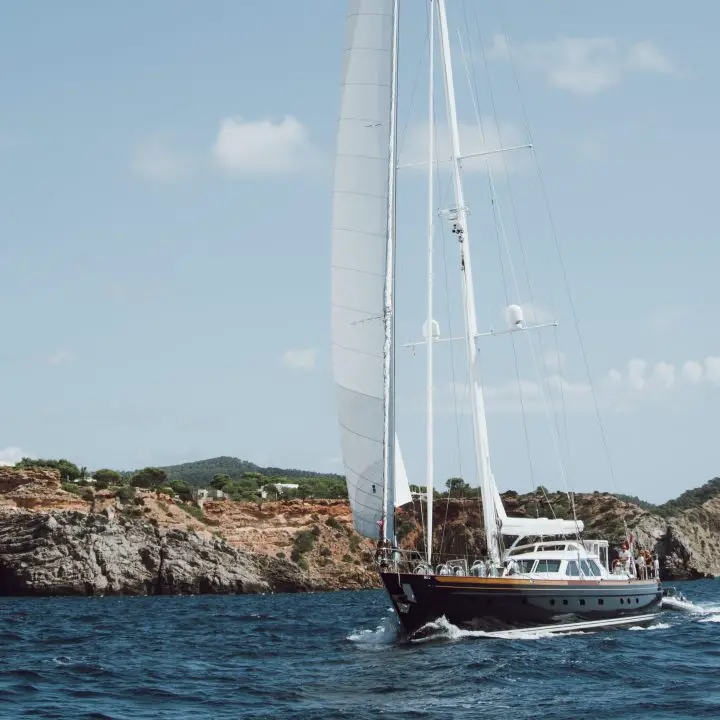
Table of Contents
17 best sailboats to live on, pros of living aboard a sailboat, cons of boat life.
- Find Your Type of Boat
Set Your Boat Budget
What size boat to pick, best liveaboard sailboats under 35 feet (< 35 feet), best liveaboard sailboats under 40 feet (35–40 feet), best liveaboard sailboats under 45 feet (40–45 feet), best liveaboard sailboats under 50 feet (45–50 feet), best liveaboard sailboats under 60 feet (50–60 feet), want to live on a sailboat, best sailboats to live on faqs.
- Catalina 34/35
- Panda/Baba 35, Tashiba 36a
- Gemini 105MC
- Islander Freeport 36
- Passport 40
- Jeanneau Sun Odyssey 42DS
- Leopard 42/43
- Beneteau Oceanis 473
- Hallberg Rassy 46/48
- Leopard 46/Moorings
- Amel Super Maramu 2000
- Privilege 585
What to Know First
So, boat shopping is a challenge, to say the least. Understanding where to start and what to look for comes down to understanding what you want to do with your boat.
Here’s a look at some pros and cons of living aboard to get you started.
- Seaside living at a fraction of the cost of a waterfront home
- Ability to travel anywhere by water
- Ability to move anytime—not tied to one location/town
- Different liveaboard lifestyle options to choose from: at a dock, mooring, anchoring, cruising (traveling)—tired of one, mix it up for a different experience
- Small living space lacks storage and privacy
- Limited resources: you must meter your fuel, water, and electricity use when not at a dock
- More exposed to the elements and more affected by weather events
- Seating and furnishings are less comfortable than in a house
- Constant maintenance to keep the boat seaworthy and clean
How to Find the Best Boat to Live on Year Round
At first, you might think boat shopping is like looking for a new car. But when shopping for a car, you have a small pool of manufacturers and models to choose from. In the end, you might have five choices and already have an opinion about each maker’s quality and reputation.
Boats are different. We’re usually shopping for boats that are a decade or more old. The manufacturers may have gone out of business years ago. When you total up all the possible makes and models of each type of boat, you might have dozens of choices with brands you’ve never heard of. Yikes!
Find Your Type of Boat
There are dozens of types of boats you could live on, depending on where you want to live and where you want to take it. Most people shopping for a sailboat will choose between coastal cruisers, bluewater boats, and sailing catamarans.
Here are some of the pros and cons of these sailboat types.
The Coastal Cruiser
- Inexpensive compared to bluewater and catamarans
- Perfect for dock living or near-shore hops
- With modifications and the right outfitting, many have island-hopped the Caribbean
- Many to choose from, and often they are lightly used
- Designs are often race-inspired and faster than typical heavy bluewater boats
- Newer, bigger boat for your money
- Often production boats have low-quality, lightweight builds
Related: Best Trailerable Sailboats
The Bluewater Sailboat
- The best bluewater cruising sailboats are capable of going anywhere
- Built to last and take anything
- Give the most comfortable ride in rough conditions
- Newer examples are expensive
- Good ones sell quickly
- Older vessels may be tired and in need of an extensive refit
- Often lack the living space that coastal cruisers have—narrower beams and transoms
The Catamaran
- Cruising cats have the maximum living space, especially cockpit dining and upper salon
- Light-filled with plenty of airflow, perfect for the tropics and living at anchor
- Larger models (40+ feet) are bluewater boats capable of going nearly anywhere
- A shallower draft than most monohulls allows for more cruising and anchoring choices
- More expensive to purchase, keep, and maintain than similar-sized monohulls
- The most in-demand vessels, prices are high and good ones sell fast
- Sometimes hard or expensive to find dock space and boatyards that can haul it out for maintenance
Still unsure which side of the monohull vs. catamaran debate you’re on? Try to get aboard some boats and experience the living space first-hand.
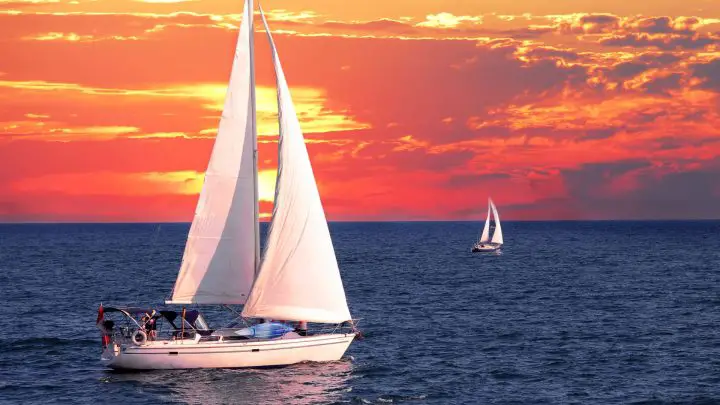
Everyone has a budget when going boat shopping, even if you’re Jeff Bezos or Elon Musk. Establishing how much you can spend on your boat is the biggest factor that will affect your decision, and it’s the backbone for all other decisions.
You must understand just how much boat costs increase as the size of boat increases. Boats are already expensive, and the average cost of owning and buying a liveaboard sailboat varies dramatically. But when the boat gets bigger, it needs bigger hardware, lines, rigging, sails, motors…everything. And bigger means more expensive, so these costs add up fast.
And then there are your storage and boat maintenance costs, all of which are charged per foot. The marina might charge you $15 per foot/per month for a dock slip, and the boatyard will similarly charge you per foot to haul and store the boat. Divers charge per foot for bottom cleaning, as do detailers for annual compounding and waxing of the hull.
When it comes to budgeting, there are two rules of thumb.
- Always pick the smallest boat you can comfortably live on.
- If you have an amount budgeted for your boat purchase, spend half on the boat and save the other half for outfitting and maintenance.
As you’ll see below, boats can be grouped by price and size. When you go up in size, you go up in price—often by a lot.
The size of the boat is a factor of your budget, but also of how big a boat you can handle. Most people believe this means driving it and maneuvering it, which is true to some extent. But a good training captain can teach you what you need to know to drive any size boat in just a few sessions.
No, the size of the boat you can manage refers more to how much maintenance you want to do. The bigger the boat, the more complex and plentiful its systems. There’s more to break on a bigger boat, and more things broken means more time fixing things.
Catamarans compound this by doubling a lot of the systems. Two engines, two saildrives, two hulls to wax, two hulls to bottom paint—you get the idea.
Another factor you should consider early on is getting insurance. Yacht insurance has gotten harder and harder to get in recent years. If you’ve never owned a boat and have no experience, you might be forced to get something small (think an under 30-foot daysailor) to get some experience on before you move up. It’s also difficult because many underwriters won’t write policies for liveaboards.
As a general rule of thumb, most people will find boats under 35 feet too small to live on full-time. Most of these vessels don’t even have standing headroom. There is often only a “wet head,” one where you take showers while sitting on the toilet.
Boats 35 to 40 feet are good for solo travelers or couples who don’t mind living in small quarters. The beds will be small and accessed only from one side, as in a v-berth or a Pullman-style berth. If there is one, the second bunk is likely only for the occasional guest.
You’ll get better accommodations when you move up to 40 to 45 footers. The second bunk may be in its own stateroom. The main suite will have an island-style berth that can be accessed from both sides—a huge upgrade for most couples. The head will likely have a separate, enclosed shower. This size sailing yacht makes a good liveaboard sailboat for most boaters.
Boats bigger than 45 feet are best for bigger families. If you often travel with kids or guests, these are the boats for you. They’re extremely spacious and make boat living easy, but the extra maintenance and cost may not be worth it.
The List — Best Sailboats to Live Aboard
All lists, whether found in internet blogs or international sailing magazines, have issues. There’s no one list to rule them all because there are simply too many different boats out there. And everyone uses their boat differently, so the “best” for you might be a terrible choice for me. Different boats for different folks, so to say.
So, what’s the deal with this list? It’s made from personal experience of having seen a lot of boats out cruising. And it’s a list that tries to put aside the fantasies—Oysters and Gunboats are pretty in magazines, but like Ferraris, not many of us will ever own one. So let’s look at some practical boats that fill each size category.
For every boat on this list, a dozen or more could’ve been included. Use these models to research brands and see which sizes suit your needs.
Boats under 35 feet tend to be best suited for solo travelers or couples comfortable living in small spaces. As always, coastal cruisers in this class have much more space than bluewater boats do. Catamarans in this class are also coastal cruisers—you need more length and volume to get real bluewater performance out of a cat. No matter which type of boat you’re looking at here, storage space on this size of liveaboard boat will be limited.
View this post on Instagram A post shared by Wilderness Of Waves (@wildernessofwaves)
Coastal Cruiser Under 35 — Catalina 34/35
If you want to move aboard, you’re on a budget, and you want the most space you can get, it’s really hard to beat an older Catalina. Starting with the Catalina 30, these beamy boats have a surprising interior volume. They make great first liveaboards.
Bluewater Sailor Under 35 — Panda/Baba 35, Tashiba 36
The famous yacht designer Bob Perry drew these Taiwanese-built boats, all tracing their lineage to the older Tayana 37 . They’re updated slightly and built by different yards, but all full keels with cutaways and built for bluewater cruising. They all have gorgeous teak joinery and are comfortable and forgiving at sea.
Catamaran Under 35 — Gemini 105MC
The Gemini 105M and 105MC were arguably the most popular cat models ever. They’re American-built, with a single diesel engine and a narrow beam that allows them to be parked in a standard boat slip. In the US, this means many more marina choices if that’s how you roll. The boat has centerboards and kick-up rudders, so the board-up draft is a scant 18 inches—gunkholing perfection.
While some Geminis have crossed oceans, they aren’t made for it. They have average (sometimes below-average) build quality and fiberglass work. However, they’re perfect coastal cruisers and capable of heading into The Bahamas.
The Gemini should be on your shortlist if you’re looking for a cheap catamaran .
Runner Up: PDQ 32
Are you looking for a small cat with better build quality? They didn’t make many of them, but the PDQ 32 is what you seek. It’s an attractive small catamaran with a wider beam. It came with twin outboards in wells, but the LRC (long-range cruiser) option had inboard diesels.

Forty feet is the sweet spot for most cruising couples—big enough to be comfortable and carry enough provisions but small enough that handling and maintenance are manageable. This class of boat has a lot of excellent choices in both coastal cruiser and bluewater boats, making it a good size range to find the perfect affordable liveaboard sailboat.
The catamaran group from 35 to 40 feet has a few very popular choices, but they are right on the edge of being too small for most cruisers. Counterintuitively, these cats are perfect for couples who don’t mind downsizing and traveling lightly. These shorter cats are prone to hobby horsing and don’t provide as comfortable a ride in bluewater as slightly longer cats do.
Coastal Cruiser Under 40 — Islander Freeport 36
The Islander brand is no longer around, but these California-built production boats from the 1970s and 80s were well-built and well-liked. The I32 and I36 were very popular cruising boats designed by Bob Perry. The Freeport 36 is a before-its-time European deck salon with enormous windows. The swing-down swim platform is another bonus for a boat from this era, as are the Pullman-style berth and forepeak-located head (some layouts). If you can find one in good condition, these boats make excellent liveaboards.
Bluewater Sailor Under 40 — Passport 40
Yet another boat from the desk of Bob Perry, the Passport 40, is a sharp-looking aft-cockpit bluewater cruiser from one of the best yards in Taiwan. They feature a long fin keel and skeg-mounted rudder. Everything about this sloop is just right for long-term cruising.
Catamaran Under 40 — Prout 38
The Prout 38 traces its heritage back to the earlier Prout Snowgoose. The boat is still being made, now under the Broadblue brand. It’s a sturdy British-built cat made for serious offshoring. While it lacks some of the open feeling that newer charter boats have, it more than makes up for it with its robust and high-quality build.
Runner Up: Leopard 40 (2005-2009)
This early L40 (don’t get confused with the newer ones built around 2020) was designed by famous multihull designers Morelli and Melvin. It’s got more of the things you might expect from your typical charter cat: a sliding salon door, galley-up layout, and a huge walk-through cockpit.
While this seems a small step up from the size of boats above, prices increase rapidly above the 40-foot mark. At this point, the boat’s gear needs to be bigger and heavier, from all the lines and rigging to each block and winch. Engines are now larger four-cylinder diesels, and there’s much more hull area to clean and paint.
A 45-foot coastal cruiser has enough space to keep a small family happy for short trips or a couple happy for any length of time. These boats usually have island berths in a spacious master bedroom, so no more crawling over each other just to go to the bathroom! Bluewater boats in this class are a little smaller inside, making them just right for most couples doing a long-term cruise.
As far as catamarans go, the 40 to 45-foot range is the perfect sweet spot for most cruising couples. A spacious interior plus excellent seakeeping abilities make these top picks. There are tons of boat choices out there, and most of the best cruising catamarans come from this size group.
View this post on Instagram A post shared by Tara Smith (@minofmine)
Coastal Cruiser Under 45 — Jeanneau Sun Odyssey 42DS
Jeanneau is part of Groupe Beneteau , but their boats often have a more refined finish than Beneteaus. The DS stands for “deck salon.” They feature larger windows that let in more light and have better visibility than a standard cruiser. This is especially welcome if you’re attracted to the living space in a catamaran but need something smaller and more affordable.
The 42DS also has an enormous island berth, plus a huge twin-helm cockpit with lots of space for entertaining.
Bluewater Sailor Under 45 — Hylas 44
The Hylass 44 is regularly picked as one of the best offshore cruising boats. It’s a center cockpit boat designed by German Frers. It has a wonderful layout with tons of living space and a large, usable galley. The aft cabin has a large island berth with an en suite head.
Catamaran Under 45 — Leopard 42/43 (2001-2006)
These early Leopard charter cats are highly sought after on the used market. Like all charter cats, the best finds are the “owners versions” with one hull dedicated to the master stateroom with en suite head and shower. The Leopard 42, which came out in 2002, had a soft canvas cover over the cockpit and was updated to the Leopard 43 with a hardtop.
Above 45 feet is another big price jump. For beginners, these big boats will require some training and experience before you head out on your own.
Related: Best Boat for Beginners
View this post on Instagram A post shared by Leopard 46 "Shanties" (@leopard46shanties)
Coastal Cruiser Under 50 — Beneteau Oceanis 473
This big Beneteau came with either 2, 3, or 4 staterooms. Finding the right layout is as important as finding the right boat. The two-stateroom version has enormous berths and lots of storage, perfect for couples with occasional guests or families of three. Most have the standard keel with less than a six-foot draft, making this fin keel/spade rudder boat a rare find. They were built from 2000 to 2005.
Bluewater Sailor Under 50 — Hallberg Rassy 46/48
Hallberg Rassys are well-regarded boats built in Sweden, mostly designed by German Frers. These are high-end boats of the best quality, so don’t expect to find one available cheaply. They’re gorgeous, however, and make wonderful world cruisers.
Catamaran Under 50 — Leopard 46/Moorings 4600 (2006)
If you want a big catamaran, it’s hard to go wrong with the 2006 Leopard 46. Where modern Lagoon and Leopards have tall profiles with tons of windage, this is one of the newest, largest boats that still have single-level living. It has distinctive hull chines that increase living space without increasing wetted surface and plenty of sail area for good performance. In true Leopard fashion, all lines are led to the helm for easy short-handed cruising despite the boat’s large size.
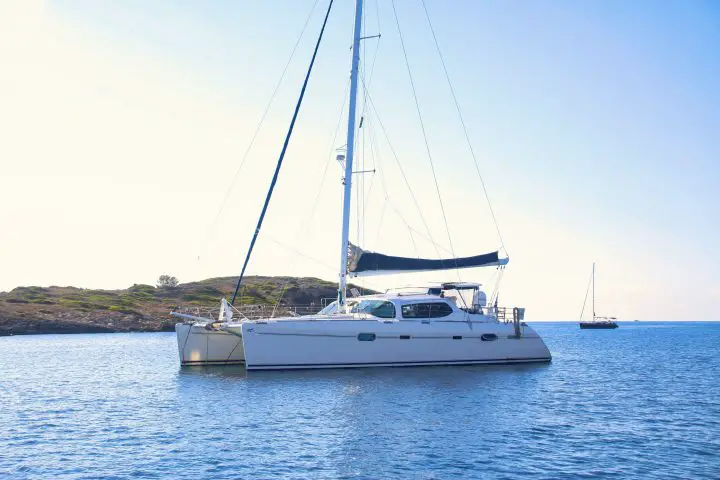
Boats in this class are borderline yachts based on their sheer size. If you were to charter these boats, they’d usually come with a crew. That size means they’re more expensive and more of a handful to manage daily.
Coastal Cruiser Under 60 — Irwin 54
The Irwin brand is long gone, but many examples are available on the used market. They were known especially for their large center cockpit ketches, like this 54-footer. This is a spacious, big water boat that certainly meets the qualifications of most bluewater boats. They can go anywhere, but they may need maintenance and refit given their ages.
Don’t get to lured by the low prices of these boats. You’ll have to lay out some serious cash to get one ready to cruise long-range. But if you aren’t opposed to some hard work and projecting, the Irwin can get you a lot of boat for not much money.
Bluewater Sailor Under 60 — Amel Super Maramu 2000 (53′)
Made famous by the Delos YouTube channel, the Amel is a French-built brand of high-quality bluewater boats. Today, this brand’s new models look like many others—wide sterned, flat-bottomed sloops. But the Maramus that made them famous were unique—ketch rigged and ruggedly built, designed to take a cruising couple anywhere. Electric winches were standard on everything to keep such a large boat easy to operate.
Catamaran Under 60 — Privilege 585
Privilege is the French-made catamaran that you don’t hear enough about. Unlike Lagoon and Fountaine Pajot, these are beefy cruising boats ready to take you anywhere. Their construction and fit-and-finish are first-rate, as is the joinery down below.
Living on a sailboat is an adventure—it’s not for everyone. Finding the right boat is an important part of doing it successfully, but it’s not the only step in preparing for the lifestyle.
You should also consider checking my post on liveaboard catamaran options, to make sure you research thoroughly enough!
What makes a great liveaboard sailboat?
Everyone’s priorities for a liveaboard sailboat are different—a bluewater cruiser looking to sail around the world might pick a very different boat from someone who lives full-time dock life. In general terms, you need to find a boat that is safely capable of taking you where you want to go and has enough living space to be comfortable while doing it.
Sailing catamarans are some of the most popular liveaboard sailboats because their living space is unmatched. Most are also bluewater-capable cruisers that can go pretty much anywhere.
What is the best size sailboat to live on?
The size of the boat you’ll be comfortable on long term is a personal choice that depends on your personality and the number of people you’ll be traveling with. Solo travelers may be content with a sailboat around 30 feet, while most couples are comfortable on something around 40 feet. Forty-five to fifty feet is more realistic if you often have guests or kind on board.
With all of this in mind, however, it’s really important to remember that the costs of buying and maintaining a sailboat increase exponentially with length. Getting the smallest boat you are comfortable living on is always better because that will be easier to manage and keep in the long run.
What are the negatives of living on a sailboat?
People live on their sailboats differently, so it’s difficult to narrow down the biggest negatives. Everyone struggles with the small living space that a boat affords. You’ll have to downsize your possessions to the absolute minimum you need. And getting personal space away from your spouse or family is pretty much impossible on a small boat.
Why are sailboats so expensive?
New boats require a massive investment in time and resources to produce. The nicer the boat, the more time and skill it takes to build, which makes costs soar. Some production companies, like Beneteau, have found ways to reduce production costs and keep the price of new boats more reasonable. But these boats pale compared to other yachts in terms of overall quality.
Older used boats can be found pretty cheaply. In fact, it’s often possible to find free or nearly-free boats that are on their way to the junkyard or dumpster. The key is understanding how much work and money it will take to get these boats ready to go again.
Is it a good idea to live on a sailboat?
Living on a boat is an amazing way to experience seaside living or traveling the world by water. But it’s also a unique, out-of-the-ordinary lifestyle choice that’s not without challenges.
Before you move onto a sailboat, you’ll want to research the topic carefully and talk to some folks who already to it. Many people start with occasional boating, spending a week or more onboard to try it out. With a little experience, it’s easy to see if it’s something you could do for the long term or if it’s best to keep a land house and enjoy the water occasionally.
Can you live comfortably on a sailboat?
Many people live comfortably on sailboats, but a lot depends on the size of the sailboat and your tolerance for living in a small space. Even the largest sailboats can feel cramped, while some folks love the cozy feeling of living on the tiniest boats.
Matt has been boating around Florida for over 25 years in everything from small powerboats to large cruising catamarans. He currently lives aboard a 38-foot Cabo Rico sailboat with his wife Lucy and adventure dog Chelsea. Together, they cruise between winters in The Bahamas and summers in the Chesapeake Bay.
Leave a comment
Your email address will not be published. Required fields are marked *
Save my name, email, and website in this browser for the next time I comment.
- Sign In or Register
- Boats for Sale
- Research Boats
- Sell a Boat
- Search Alerts
- My Listings
- Account Settings
- Dealer Advertising
- Centerboard Sailboat
Centerboard Sailboat Boats for sale
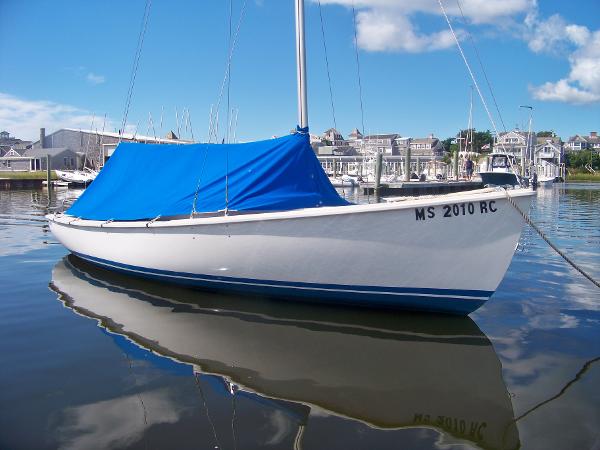
2010 Rhodes Rhodes 19 Centerboard Sailboat
Harwich Port, Massachusetts
Make Rhodes
Model Rhodes 19 Centerboard Sailboat
Category Daysailer Sailboats
Posted Over 1 Month
2010 Rhodes Rhodes 19 Centerboard Sailboat R19 Compass mooring cleat bouble chock kit outboard bracket kit R19 MAINSAIL Jib Sail R19 Boom cockpit tent Pr spreader boots Masthead wind indicator gusher bilge pump kit Fir Extinguisher 2012 Honda 2hp 4 cycle outboard with bracket Anti foulingg bottom paint Blue bottom with blue boot stripe VERY NICE BOAT LIKE NEW OFFERS ENCOURAGED
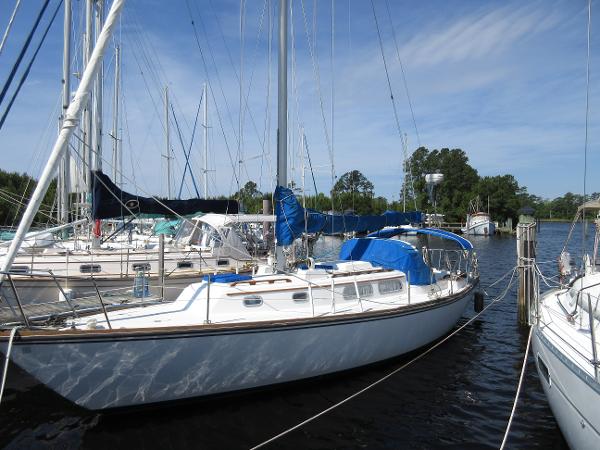
1978 Pearson 35 Centerboard
New Bern, North Carolina
Make Pearson 35
Model Centerboard
Category Racer Boats
1978 Pearson 35 Centerboard SEAQUEL is a well cared for, very sharp and graceful 1978 Pearson 35. She sails beautifully, accelerates quickly and is a very efficient sloop rigged vessel. This boat in beautiful condition and has been constantly upgraded. She shows exactly how the pictures look! This is a golden opportunity to purchase a very well made classic Pearson 35 in beautiful condition! With its’ Center Board keel your draft range is anywhere from 3'9" to 7'6" which allows opportunities to anchor in those great anchorages that others will miss while having great windward performance. If you want a wonderful sailboat, “just buy a Pearson!” Seaquel won't last long.
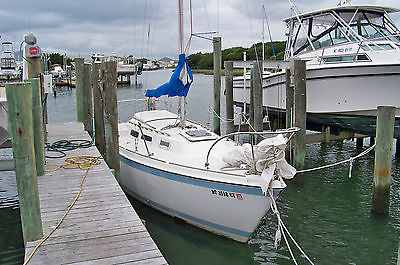
1977 O'Day Sailboat 25ft Centerboard
Morehead City, North Carolina
Length 25.0
1977 O'Day sailboat in very good condition for sale. 5 horsepower Honda long shaft outboard with very low hours. Outboard motor starts on the first pull and brings the boat to hull speed even against current. New high thrust prop on the motor. Includes original prop. Completely new shore power system with Blue Sea ELCI panel and GFCI receptacles. New DC panel and wiring. New standing rigging - replaced all 6 stays with new old stock. The 35ft mast has new wiring, a new Shakespeare antenna, new LED anchor light and new LED running light. Centerboard has a new pendant line. New Saturn bulkhead compass wired with light for night sailing. Hauled out completely scraped and painted this last November '14 with ecominder copper free ablative paint. Rudder has brand new heavy duty guntles, so the rudder is very secure. Working VHF radio. Comes with good mainsail, good hank-on jib. Porta potty in good condition included. Water system is a nice jabsco pump system with a new 25 gallon water tank. Through hull beneath galley replaced last November with a brand new covered flange ball joint with a mounting plate. Has all the anchors and lines you need. This boat is trailer-able. Ready to go! Is a very roomy boat would be great for weekend trips and overnights. Draws 27" with the board up and 5' down. Equipment List:: Anchors VHF radio 50ft shore-power cord 10" brass Lewmar winch handle New water tank New shore power New compass new Shakespeare antenna new masthead light new LED running light new Groco flange valve through-hull Recent Improvements: $250 - Standing rigging replaced with new old stock from another O'Day (in excellent shape). $100 - Rudder guntles have been replaced top and bottom and bolted through the hull - this rudder won't come off. $250 - Through hull beneath galley replaced with Groco flange ball valve, so the one through hull below the waterline is very secure. $250 - New water tank and pressurized water system. $700 - Hauled scraped and painted November 2014. New Saturn bulkhead compass. $500 - New shore power Blue seas AC panel and system with ELCI and GFCI receptacles. New DC panel and wiring. $175 - New masthead light, running light and Shakespeare antenna on top of mast, mast was rewired. $40 - New Pendant Line for centerboard. $200 - New bulkhead Saturn Compass. $100 - New DC panel and wiring including 2 good batteries. $60 - 3 good anchors. Located in Adam's Creek across the Neuse from Oriental Day sailer sailboat liveaboard
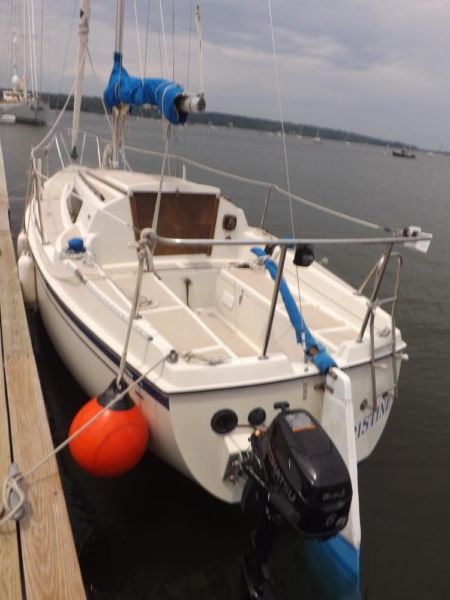
1984 O'Day 26 Centerboard Sailboat
Oyster Bay, New York
O'DAY 1984 26' SAILBOAT includes mooring for the spring/summer season in Oyster Bay, NY!!!! Centerboard makes South Shore Sailing a breeze and you can also pull up to the beach! Great entry level sailboat for daysailing, cruising, or overnight stays on the water. Motivated seller; price is negotiable. Perfect sailing for Long Island Sound or Great South Bay - draws only three feet. Can be easily trailered (no trailer included) with her centerboard keel and mast head rig. Designed for comfort and ease of use. The cabin area can sleep four comfortably. Great shoal draft/centerboard with new 2014 Tohatsu, 6 hp engine, four stroke outboard long shaft, barely broken in with portable, 3 gallon fuel tank. Anodized aluminum mast is deck-stepped. This is a highly manueverable sailer, with ease in comfort, launching and the pedigree of O'Day. LOA: 26 Beam: 8.0 Draft: 2.6 Board Up and 6' Board Down Displacement: 4,800 Ballast 1,850 internal lead Vessel is equipped with Quantum sails: 2011 Quantum main sail 2011 Quantum 135% Genoa 2011 Harken Roller Furler Lazy Jacks and reefing system, yard installed Vessel has double v berth forward w privacy door, port and starboard settees in main cabin, port settee pulls out and forms double berth, quarter aft berth and there is storage under all berths and behind settee backs. Head compartment is fitted w porta-pottie, hanging locker, vanity w sink and lockers above and below. Galley area is starboard aft w two stainless steel sinks, one 20 gallon water tank, one folding table, two burner alcohol stove and deep insulated ice box. Vessel has Horizon VHF radio, bulkhead mounted compass, 12 V DC electric panel, battery 12 v, running lights and interior lights. In addition, horseshoe, throw-able PFD, flares, distress flag, air horn and fire extinguisher. There are dock lines, two boat hooks, and one winch handle. New bottom paint 2015. Photos: www.sellyourboatnow.shutterfly.com
24' 2013 Raven Class Centerboard
Riverhead, New York
Please call boat owner Warren at 631-255-5900. I have 24' Raven Class Sailboat reconditioned totally in 2013 ,Awgrip paint hull & deck with new sails from Doyle Sailmakers,( 2013), Fully rigged ready to go . The trailer has new wheels and springs ,totally reconditioned ,custom to cruise down the highway . Easy show Riverhead, NY .All new hardware, centerboard, seats from Cape Cod Shipbuilding. If interested please leave ph# and I will call promptly!
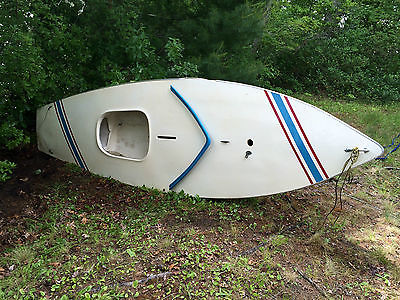
Alcort Sunfish Sailboat Boat, Mast, Sail, ropes, Rudder, and 2 Centerboard s
Mashpee, Massachusetts
Make Alcort Sunfish
Model Alcort Sunfish
Category Sailboats
I paid $1,575 for this boat 7 years ago. It had sat in someones garage for 30 years. It was in fantastic shape when I bought it. It was used 2 times the first year I got it. I had grown up sailing a sunfish and bought it hoping I would use it a lot at the lake in Mashpee Massachusetts summer cottage where it has been stored. It has been stored year round underneath tarps completely covered year round. This sale includes the boat, the sail, the ropes, the mast, 2 centerboards, and the rudder. The rudder was missing the last segment when I bought it-the part you hold on to, so I invented a last segment which worked fine for me. One centerboard is in great shape, the other in ok shape. The one piece of damage is seen clearly in the photos- one piece of metal strapping has peeled away from the edge. I am sure someone who knows what they are doing can bend it back. I would rather not attempt it myself. It was watertight when I sailed it. It is sold as is.It is a great deal.Cape Cod Mashpee on the shore of a lake.

17 ft. Gaff Haven 12 1/2 Sailboat. Centerboard version of the Herreshoff 12 1/2
Grosse Pointe, Michigan
Make Custom Built
Length 17.0
The Haven 12 1/2 is Joel White's centerboard version of the Herresshoff 12 1/2. This boat was built to the highest standards, completed in 2006. It has a white oak keel and steam bent oak frames. It was built with plank on frame construction over molds at each frame with Atlantic White Cedar. The front deck is 3/8" marine plywood with teak marine grade plywood laminated on top and scribed with lines to represent deck planking. The rest of the wood is all mahogany and teak. The gaff rigged sails (main and jib), are from Center Harbor (Maine) sail makers. The metal hardware is all silicone bronze as are all the screws. All the spars are Sitka Spruce, which is very light weight and very strong. She has Sunbrella main and jib sail covers. There is a marine grade deep discharge 12 volt battery which powers Minn-Kota electric trolling motors for auxiliary power. There is also an AM/FM/Marine stereo system with iphone/ipod input and two mounted speakers. A galvanized wire lifting harness is also included. It comes with a custom built galvanized Triad trailer (~2006), which has a custom mast holder and "sail off" capability. New paint and varnish was completed inside and out in April, 2015 using Epifanes Varnish and George Kirby Jr. paint. The boat is located near Detroit, Michigan - worth the trip! $20,000. Reasonable offers considered. Shipping and payment: Cannot deliver boat. Payment required in full at time of purchase.

1981 C&C 40 Centerboard Cruiser/Bristol
Daytona Beach, Florida
Make C&C
Model 40 Centerboard Cruiser/Bristol
1981 C&C 40 Centerboard Cruiser/Bristol PRICE REDUCTION!YOU WILL NOT FIND A BETTER 40' SAILBOAT AT THIS PRICE!!!IF YOU ARE READY TO SAIL TO THE ISLANDS, SO IS THIS BOAT! EQUIPPED AND REAY TO GO!This is your chance to own a RARE & GREAT C & C Performance Cruiser, Centerboard Sloop at a Great Price with TONS of NEW Items! PERFECT LIVE ABOARD!New NS Triple Reef Main Sails (2015)Bottom Painted (March 2015)Engine Serviced: Valves Adjusted, New Thermostats, New Hoses, Injectors Cleaned, Oil Changed, etc. (2015)New Raw Water Pump (2015)Storm Jib Brand New, Never UsedGenny Sail Re-sewn & certified with Sunguard (2015)Most Lines just replaced (2015)New Life Jackets (2014)New 8 1/2 ft. Zodiac PVC Dingy (2015)NEW West Marine Jacob Toilet (April 2015)NEW Macerator Pump (April 2015)NEW Cockpit Bimini (October 2015)
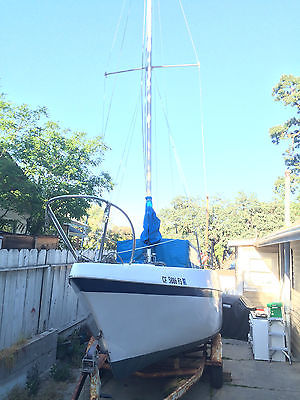
26' Clipper Marine Sailboat
Paso Robles, California
Make Clipper
Model Marine
Length 26.0
For sale is a 26 foot Clipper Sailboat. Great condition, ready to sail. Comes with two main sails, a genoa and a storm jib. Swing keel, extremely easy to tow (folding centerboard and removable mast). Serviced 8hp two stroke engine that starts every time. Pop top to allow for 6 feet of head room. Sleeps four comfortably. Ice box, sink, water bladder, porta-potty, and cabinets for storage. Table folds down to allow for sleeping area. Licensed through Dec. of 2015. Title in hand. Comes with an older trailer (functional but an eyesore) for free.
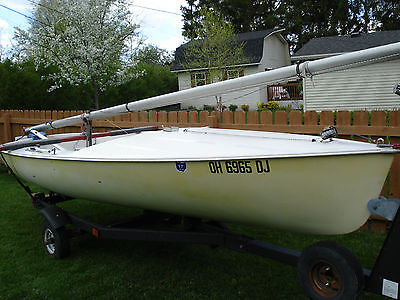
Chrysler Mutineer Sailboat
Make Chrysler
Model Mutineer
Length 15.0
1975 Mutineer Sailboat built by Chrysler Marine. Centerboard day sailor. Hull weight approx. 475 lbs. Made for two sailors but will hold four. Hull good. Most of standing rigging has been replaced with new SST wire. Running rigging mostly all new. Sails professionally cleaned and re-resined 3 seasons ago. Main and jib sail area 150 sq. ft. Roller furling jib. Trailer was reconditioned with new lights, new coupler and swing up trailer jack. Tires OK and rims have bearing buddies. Pick up only - near Dayton Ohio
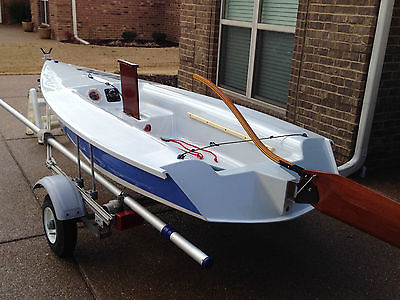
ZUMA Sailboat and Trailer
Jackson, Tennessee
Make Vanguard
Category Dinghies
Length 12.8
This is a beautiful ZUMA sailboat with a Trailex aluminum trailer. It is a Vanguard built boat that has only been sailed a few dozen times. It has been covered or garaged for most of its life, and it shows. As the pictures taken in the last year or so attest, it looks wonderful. The ZUMA was made by the same folks who build the Laser; but the ZUMA, in my opinion, is much nicer to sail with two people than the Laser. It is a fun boat that is not as high in performance as the Laser, but is easier to set up, and requires, perhaps, less athleticism too. It does move along quite nicely. Beginners can sail this boat; or folks like me, with over thirty years of sailing experience, can enjoy it too. The ZUMA is good for any age sailor that has been properly taught. It takes just minutes to set up, and requires little maintenance. It has a zippered luff, so that the sail can be raised and lowered with a halyard; meaning the mast does not have to be lifted in and out every time like a Laser. The boat only weighs 130 pounds and can be towed by most any car out there with a hitch (check your manual, though). Trailer and all, the towing weight is only around 275 pounds; thanks to the lightweight trailer. This boat looks like it is only a year or so old, and comes with nifty extras. The NORTH sail is in wonderful, almost new, shape. But that's not all. I include a virtually new Neil Pryde sail too. Both sails are very nice looking. It has a Harken tiller extension on a beautiful laminated tiller, and the single bulkhead port has been expanded to two, with storage bags in each. The lines are all like new and bright in color. The traveler block set is upgraded to the one piece design from the Laser. This package includes a new rudder cover and a new centerboard storage bag. I include a HAWK wind indicator and other little extras. The SILVA compass was standard on the ZUMA, and is, of course, included. The Trailex aluminum trailer supports the boat by the gunwales to avoid stress on the bottom. The tires (with galvanized rims) are less than two years old, and I will include a brand new spare with galvanized rim. Spare tire is not mounted on trailer; but can be stowed in trunk of car or such. The trailer comes with LED lights, too. There is also a custom Sunbrella boat cover included. The cover, as would be expected, is the one thing that shows the most signs of wear. It has done its job of protecting the boat, though, and should continue to so so for quite some time to come. New covers should be readily available when this one needs replacing. Pictures tell a good story; but here is some additional information regarding those pictures. The sailing pictures were taken in 2014 on the Intracoastal Waterway near Pensacola Beach. Most pictures show the boat before the second port was added. Some ZUMA's had either one or two, for seemingly no rhyme or reason. The boat looks much more balanced with two, and it's handy for extra storage too. Storage bags for the ports are included; along with a small oar that can be stored inside the hull. The oar was sized to fit right through the port. The ZUMA logo on the top of the boat was removed earlier this year. I hated it, and thought the boat looked much more refined without it. I had no intention of selling it when it was removed, but you could always have a sign shop do a logo to pretty much match it, if you were so inclined. The boat has some crazing of the gelcoat here and there, and there are a few scratches, but none of that detracts from the overall beauty of the boat. There is normal wear and tear on the trailer, but once again, it looks like a year or two old package. You have to see it to appreciate it. The boat is in Tennessee and if you are within driving distance, it awaits your inspection. I have sailed for over thirty years and take really good care of my boats. This boat was owned originally by a friend who takes, perhaps, even better care of his boats. It is almost impossible to believe how good this boat looks for its age. Nothing's perfect, but this boat could be a Christmas gift come true for someone wanting to mess about in small boats. New boats of this type start at prices of 5,000 and up; and the Trailex trailer alone sells for about 1,100.00. A spare sail and extras make this all even more worthwhile. I have title papers for both boat and trailer. Please email me with any and all questions. There is video of this boat being sailed also available; if you want to see it in action. The entire package is ready to be towed away by the buyer. I want you to see it, look at the gear, and be completely satisfied before you drive away. You will be pleased.

1980 Pearson 35 Sailboat
Classic 1980 Person 35 w centerboard shoal draft and equipped w Fairclaugh custom canvas cover and 400 lb mooring. On the hard in Oyster Bay, New York - ready for viewing. Well maintained vessel. Masthead sloop w deck stepped mast and aluminum spreader. Equipped w Harken roller furling on jib (new 2004), Main sail (very good condition), Genoa 110 and 135. All sails are in good to very good condition. Lots of storage, great u-shaped aft galley, large sink, expansive counter space makes for ease in entertaining. Mast, standing rigging were replaced in 2003/2004. Summer of 2010 new motor mounts, alternator, water pump, water separator, fuel pump and added 2nd fuel filter. 2014 new bilger pump and fresh water pump, 2010 new heat exchanger, muffler system and 6 gallon hot water tank as well and black water holding tank, head and pipiong. 2007/2008 replaced Spectra line and rollers for raising centerboard. Vessel equipped w Garman GPS Model 500 (purchased 2011), VHF radio, depth sounder and speed indicator, hot/cold pressurized water, shower, new (2004) Lerwmar external mount anchor windlass, fresh water wash down in anchor locker, private bathoroom has head, shower and sink. Must see. Well maintained vessel. Make an offer. Owner negotiable. Photos: www.sellyourboatnow.shutterfly.com Contact: Steve/Patty (631)896-6212

Traditional Beetle Cat Sailboat
Rochester, Massachusetts
Traditional beetle cat sailboat. Hull number 1024 which means it is from the late sixties. Made of wood and in very good shape. Hull has been refastened with stainless steel in the recent past. Needs new canvas and some deck repair. There was a hole in one plank and a Dutchman repair was started. It needs the new piece installed. I cannot stress what good shape the hull is in. I would keep it but I need the room. Some hardware and centerboard included. Willing to negotiate.

18’ American Sailboat & Trailer
Vincentown, New Jersey
The American 18 Daysailer is ideal for those who are seeking a spacious and comfortable daysailer which is also designed for speed and performance. Design features include a self bailing cockpit, molded in drink cooler storage areas, three storage compartments, kickup rudder and centerboard, adjustable jib tracks, Harken hardware, and stainless rigging. The American 18 is constructed of hand-laid fiberglass with positive foam floatation for a durable and safe boat. The wide beam and flat bottom planing hull allow for exceptional performance in a light breeze or in a heavy wind. This boat is designed to sail flat with minimal heel. Seats 6 people. Includes bumpers, main sail, jib sail, custom seat cushions, motor mount and swim ladder in excellent condition. Boat has been kept in dry storage and mainly used in fresh water. Trailer is in excellent condition and includes spare tire.

1971 Bristol 30' Sailboat
Branford, Connecticut
You are looking at a 1971 Bristol 30’ Sailboat. This sailboat is ready to sail! It just needs some cleaning, maybe some paint on the top deck and just some overall TLC. This boat comes with some incredible features not found on most other sailboats. Who can argue with a loaded classic Bristol! Features: Shoal Keel with Centerboard Atomic 4 Gas Engine Updated with Electronic Ignition Updated with Electric Fuel Pump Three NEW self-tailing winches Raymarine Speed, Depth, Wind and Autopilot Used only once to test function Roller Furling Sails – Main, Jib and Spinnaker with Pole Alcohol stove/sink and ice box Bottom barrier coated and painted Sleeps 6 This boat is on land and needs to sell. The stands are not included and there is no trailer. The price listed is best offer, but would like to get as much money back on the investment as possible. Check the market, no other Bristol is this cheap READY TO SAIL. Put it in the water and catch some wind! Please call Pete at (203) 494-4570. The boat can be seen in Branford, CT. Please call to schedule appointment.
Narrow Results
Current search reset all.
- Keyword: centerboard sailboat
- Pearson (7)
- Hinckley (2)
- Marlow-Hunter (2)
- Precision (2)
- Vanguard (2)
- Alcort Sunfish (1)
- Chrysler (1)
- Clipper (1)
- Crosby Classic Catboat (1)
- Custom Built (1)
- Custom Flex (1)
- Force 5 (1)
- Fulmar 19 (1)
- HERITAGE YACHT CORP (1)
- Haven 12-1/2 (1)
- Herreshoff (1)
- Lippincott Boat Works (1)
- Macgregor (1)
- Macgregor 26S (1)
- Pearson 35 (1)
- Stornoway (1)
- Windjammer Yachts (1)
- Sailboats (10)
- Daysailer Sailboats (9)
- Cruiser Motorcycles (5)
- Dinghies (3)
- Racer Boats (2)
- Sloop Sailboats (2)
- Cruiser Sailboats (1)
- Florida (26)
- Massachusetts (7)
- New York (7)
- Indiana (5)
- New Jersey (5)
- Connecticut (4)
- California (3)
- North Carolina (3)
- South Carolina (3)
- Wisconsin (3)
- Maryland (2)
- Michigan (2)
- Tennessee (2)
- Georgia (1)
- Kentucky (1)
- Louisiana (1)
- Minnesota (1)
- Mississippi (1)
- Missouri (1)
- New Hampshire (1)
- Washington (1)
- POP Yachts (12)
- Search Title Only
- Has Picture
- Include Sold Listings
Showcase Ads

2016 Realse 208 RX
Indian Harbour Beach, FL

2005 Champion 24 BayChamp
Neptune Beach, FL

2014 Boston Whaler 220 Outrage
Brigantine, NJ

2006 Sea Ray 300 Sundancer
Santa Rosa, CA

2015 Chaparral 21 Sport H20
Crescent, MO

2016 Centurion Enzo FS44
Evanston, IL

2017 Yamaha SX 210
Kenneth City, FL
Create Alert
Please, name this search
Select Interval
Alert Successfully Created

IMAGES
VIDEO
COMMENTS
Ease the main or lower the traveler. Reef the main and the headsail in balance. When sailing off the wind, it is often better to reef the main before the jib, to help keep her head down. Rake the mast to spec. Sail the boat flat. Bear away in the puffs when sailing deep, before the boat begins to heel excessively.
Cons: Cored hull and teak decks on boats of this age can be landmines. Are two centerboards double trouble? 2. Morgan 41. Ive sailed on a couple of these sloops and like the way they look and sail. The boats heritage gives it a loyal following (a good thing to look for in any used boat).
A sailboat centerboard is a retractable fin that protrudes from the bottom of the hull. The centerboard keeps the boat stable and on course. Centerboards are an important and often overlooked part of a sailboat, but they're essential to stability and effective navigation. Centerboards perform the function of a keel and keep the boat on course ...
Finally, here in the United States, the quest for thin-water performance has resulted in some of our most celebrated designs. Examples include New England's beamy catboats with their centerboards (in larger models) and shallow "barn door" rudders; the equally beamy hard-chined skipjacks of the Chesapeake Bay; and the many different sharpie designs found everywhere from Long Island Sound ...
In cruising boats, swing keels weigh several thousand pounds, while centerboards weigh a couple hundred. Thus, a swing keel also contains a large part of the boat's ballast, so the position of the keel can have a substantial effect on the stability and motion of the boat.
When it comes to sailing, understanding the different types of boards used in sailboats is essential. Two commonly used boards are the daggerboard and centerboard.While both serve a similar purpose of providing stability and preventing lateral movement, there are a few key differences between these two options. So, let's dive deeper into comparing daggerboards versus centerboards to shed ...
A sailboat centerboard is a retractable keel or fin located in the center of the boat's hull. It provides stability by counteracting lateral forces from wind, allowing the vessel to sail closer to the wind. The centerboard can be raised or lowered based on water depth and sailing conditions, optimizing performance and preventing damage.
Centerboards and rudder blades are often overlooked components that are of vital importance to a boat's performance. Built correctly, they will reliably operate with the efficiency of a fish's fin, and you should note a measurable improvement in the quality of pointing and steering of your windship. References: 1.
Another key advantage of centerboard sailboats lies in their ability to minimize drag when sailing downwind or reaching (sailing across or perpendicular to the wind). As opposed to fixed keels, which generate significant resistance and slow down the boat's speed, centerboards reduce drag by retracting fully beyond the hull's bottom surface.
Featured Sailboats (all): 31' Hunter 31 Smith Mountain Lake VA Penhook, Virginia Asking $13,500. 34' GEMINI 105MC Rouses Point, New York Asking $139,000. 26' MacGregor 26S SE, Utah Asking $13,900. 26' crysler C - 26 battle creek, Michigan Asking $2,900. 35.5' Ericson 35-3 Somers, Montana Asking $21,900.
Yes, swing-keel centerboards, those bronze, steel, or fiberglass foils that hinge from the keel like the blade on a Swiss army knife, are making a comeback. This is great news for shoalwater sailers who, for lack of other options, have tolerated decades-old centerboarders and the many ailments that plague them-corroded lifting cables ...
Boat Review: Beneteau Oceanis 37.1 I could feel the boat find her groove and settle in at 7.2 knots on a beam reach with the code zero flying. It was a crisp autumn day on Chesapeake Bay and we were hauling the mail with one finger on the wheel and twin rudders gripping below the waterline.
Order one or more parts and get one price shipping. Gresham rudders, centerboards, and leeboards have constantly won national championships and major regattas since 2000. We carry a complete line of new and replacement parts for the Lido 14, Naples Sabot, Cal 20, and more. We specialize in boat repair, rigging, and tuning.
Re: Centerboards - good or bad. CB"s are great in skinny water and depending on your under belly full keel or split, is necessary for close hauled work. Access to the pin for servicing or replacement is a definite factor to consider. And that the thickness of the keel shoe should be ample to absorb the stresses.
Featured Sailboats (all): 28' Cape dory yachts Cape Dory 28 Pepperrell Cove Kittery Point, Maine Asking $13,900. 43' Slocum 43 Cutter aft cockpit with boom furler Mexico Puerto Vallarta, Asking $129,000. 27' Cape Dory CD 27 Haddam, Connecticut Asking $18,000. 40' Beneteau First 38
This article will help you choose which is best for your needs. As only a very general rule, most sailboats over 20-something feet have fixed keels. Most sailboats under 15 feet or so have centerboards. But there is a wide range of boats from 12 to about 25 feet with either a fixed keel or a centerboard. For example, in this photo, the boat on ...
Short answer centerboard sailboat: A centerboard sailboat is a type of sailing vessel that includes a retractable fin-like appendage called a centerboard. Centerboards provide stability and help prevent lateral drift when sailing upwind. They can be raised in shallow waters or when the boat is not under sail, and lowered for enhanced stability while underway.
That makes the center board attachment super stout. There are some swing keel and dagger board boats that do have weighted movable keels but they are a horse of an entirely different color. There really isn't much to go wrong with a center board. The board pivots on a pin that is typically an 1" or more in diameter.
CL Stealth carbon Daggerboard. We developed the original prototype daggerboards for the Stealth. Construction is carbon fiber over a lightweight CNC-milled core. These are available as an upgrade over the aluminum extrusions that are delivered with the boat, and they fit the same daggerboard slot. Click Here for Price Post Feedback.
Most cruising centerboard boats have pivoting centerboards (just weighted enough to cause them to be heavier than water) or Swing Keels (which pivot and are weighted significantly enought to help act as part of the boat''s ballast.) There are daggerboard boats out there but those are mostly small boats. There is a current trend in small race ...
Featured Sailboats (all): 37' Pearson 37-2 Mobile, Alabama Asking $49,000. 37.33' Tartan 37 CB Bayfield, Wisconsin Asking $36,900. 40' Norseman N400 La Paz Baja California Sur Asking $149,000. 27' Tartan Tartan 27-II Madison, Wisconsin Asking $14,000. 35' Ericson Ericson 35 Lewes, Delaware Asking $35,000.
The boat has centerboards and kick-up rudders, so the board-up draft is a scant 18 inches—gunkholing perfection. While some Geminis have crossed oceans, they aren't made for it. They have average (sometimes below-average) build quality and fiberglass work.
New DC panel and wiring. $175 - New masthead light, running light and Shakespeare antenna on top of mast, mast was rewired. $40 - New Pendant Line for centerboard. $200 - New bulkhead Saturn Compass. $100 - New DC panel and wiring including 2 good batteries. $60 - 3 good anchors.